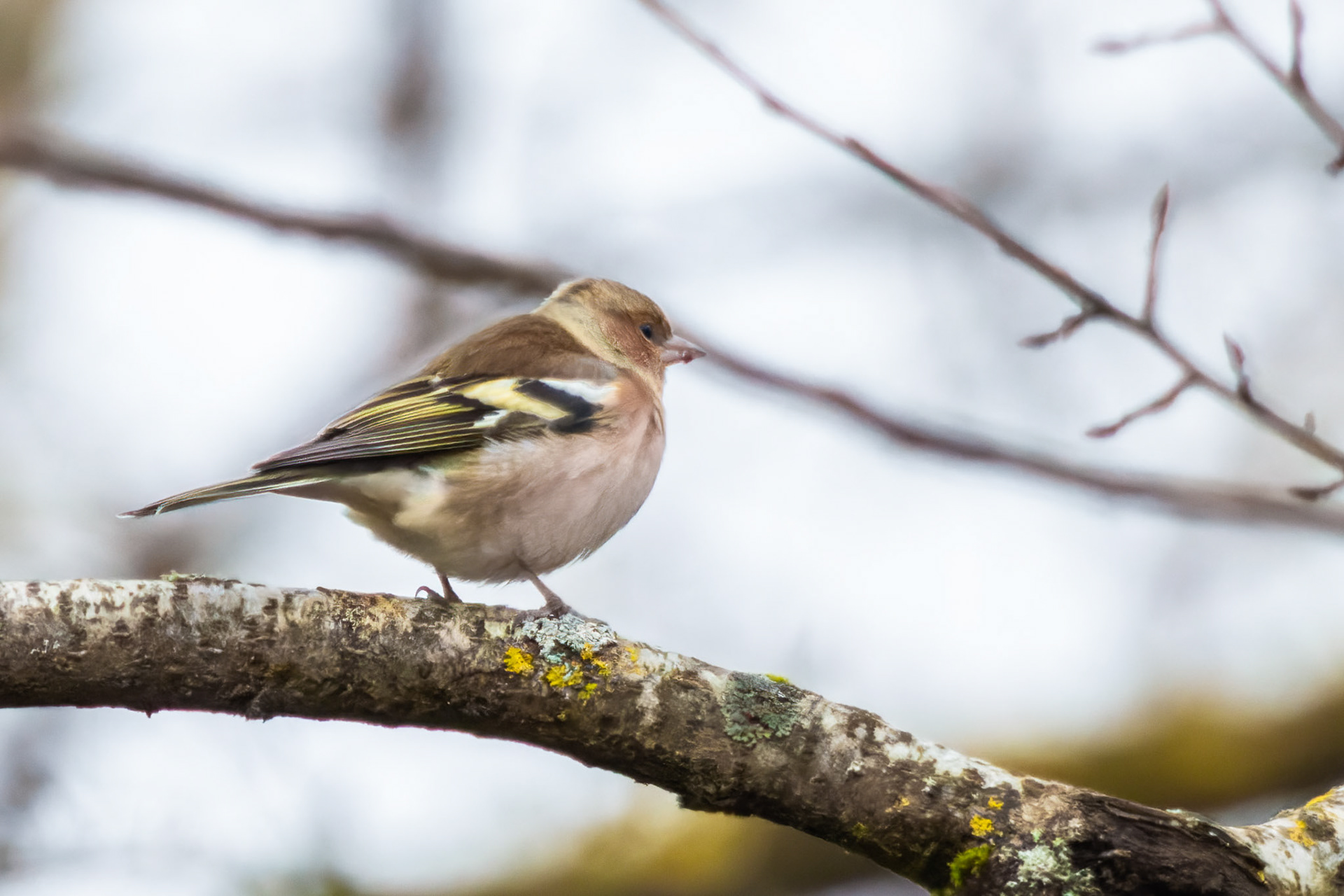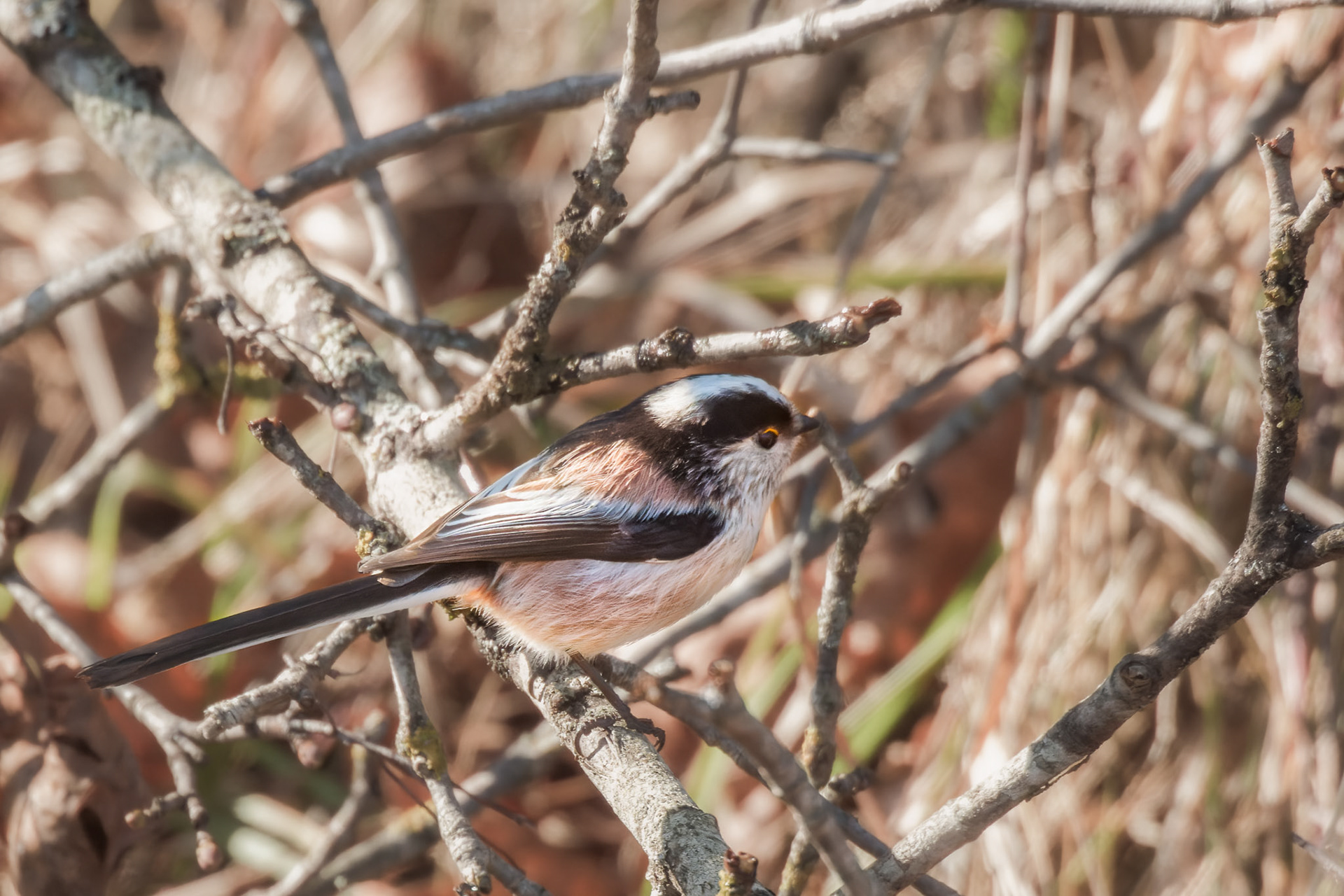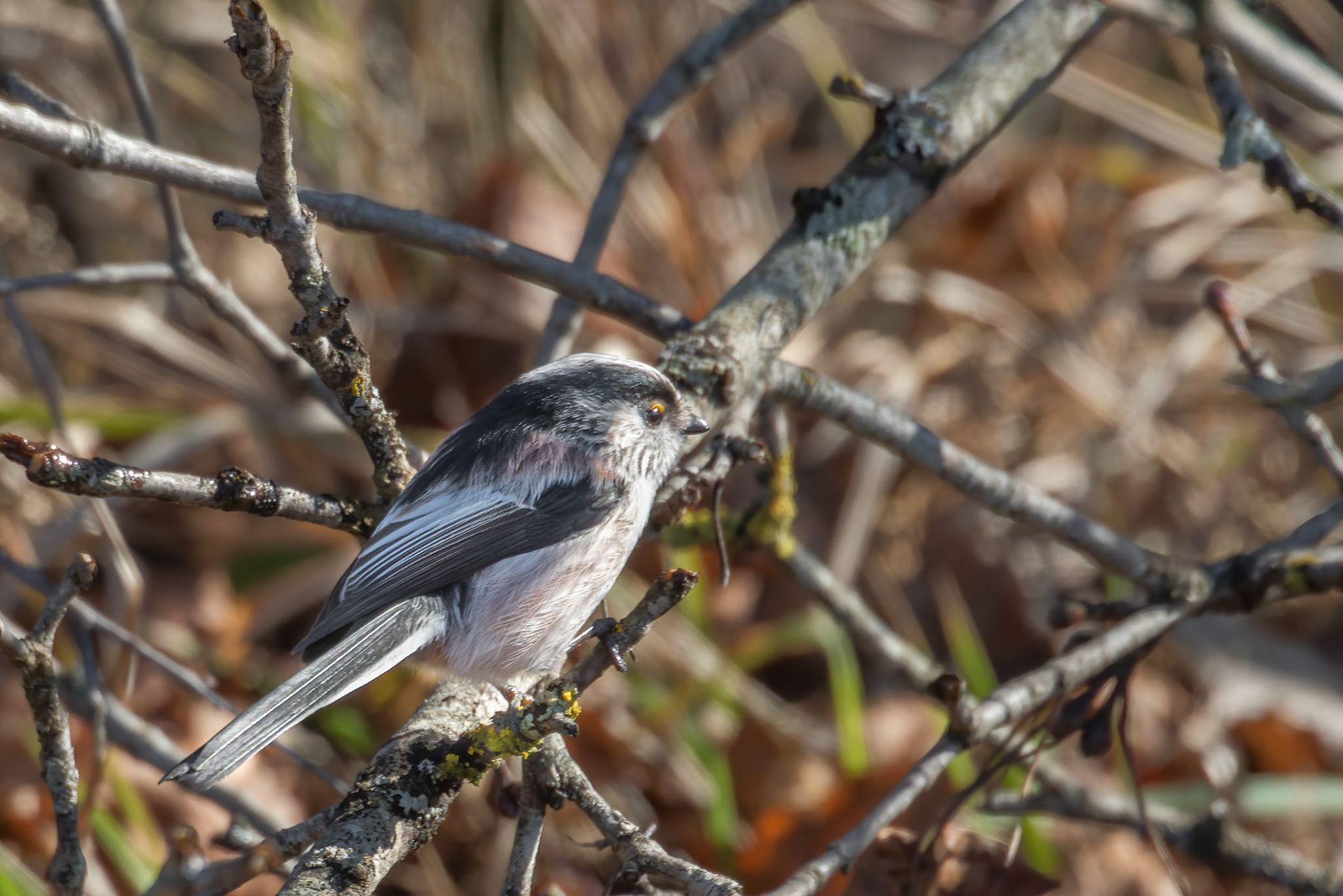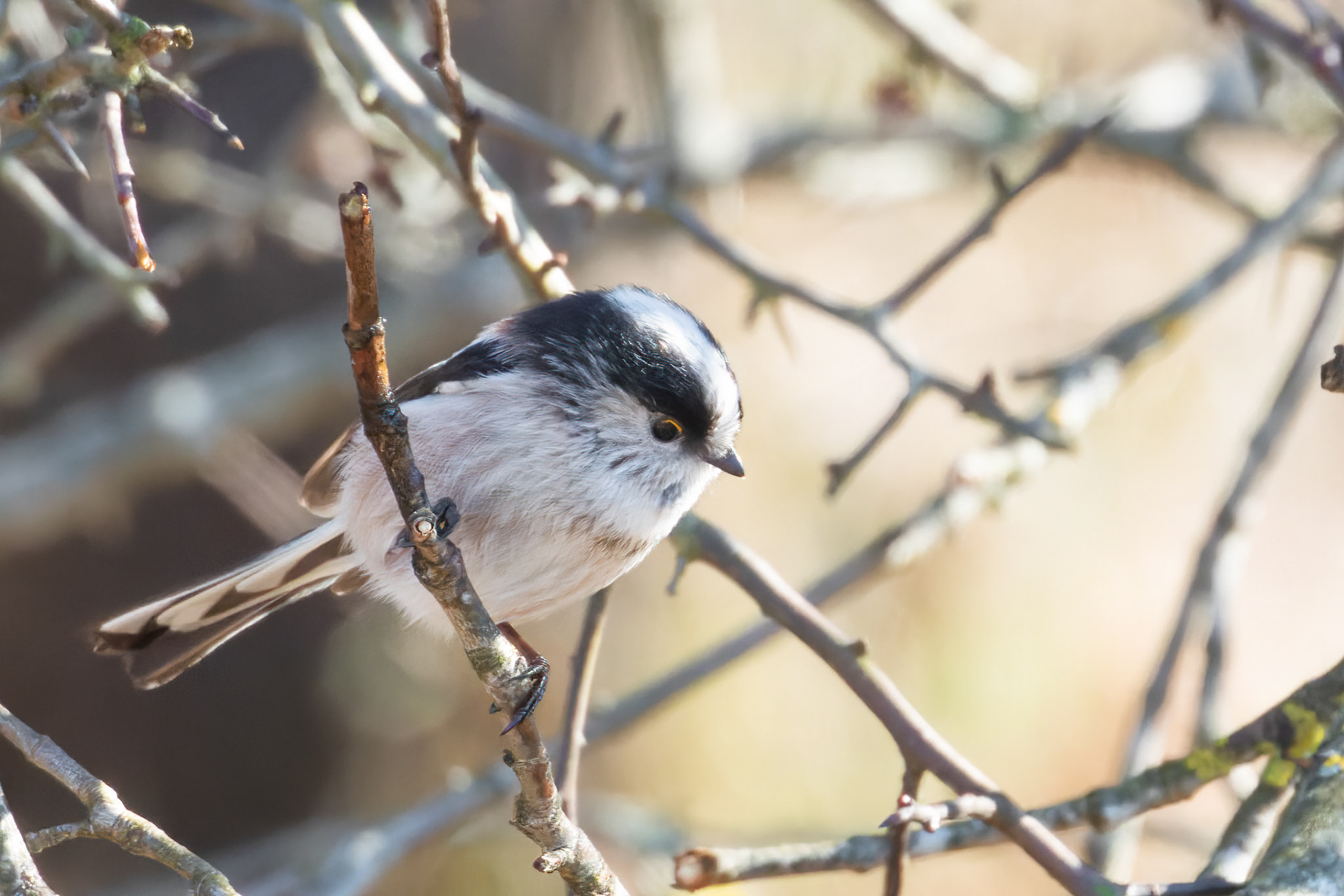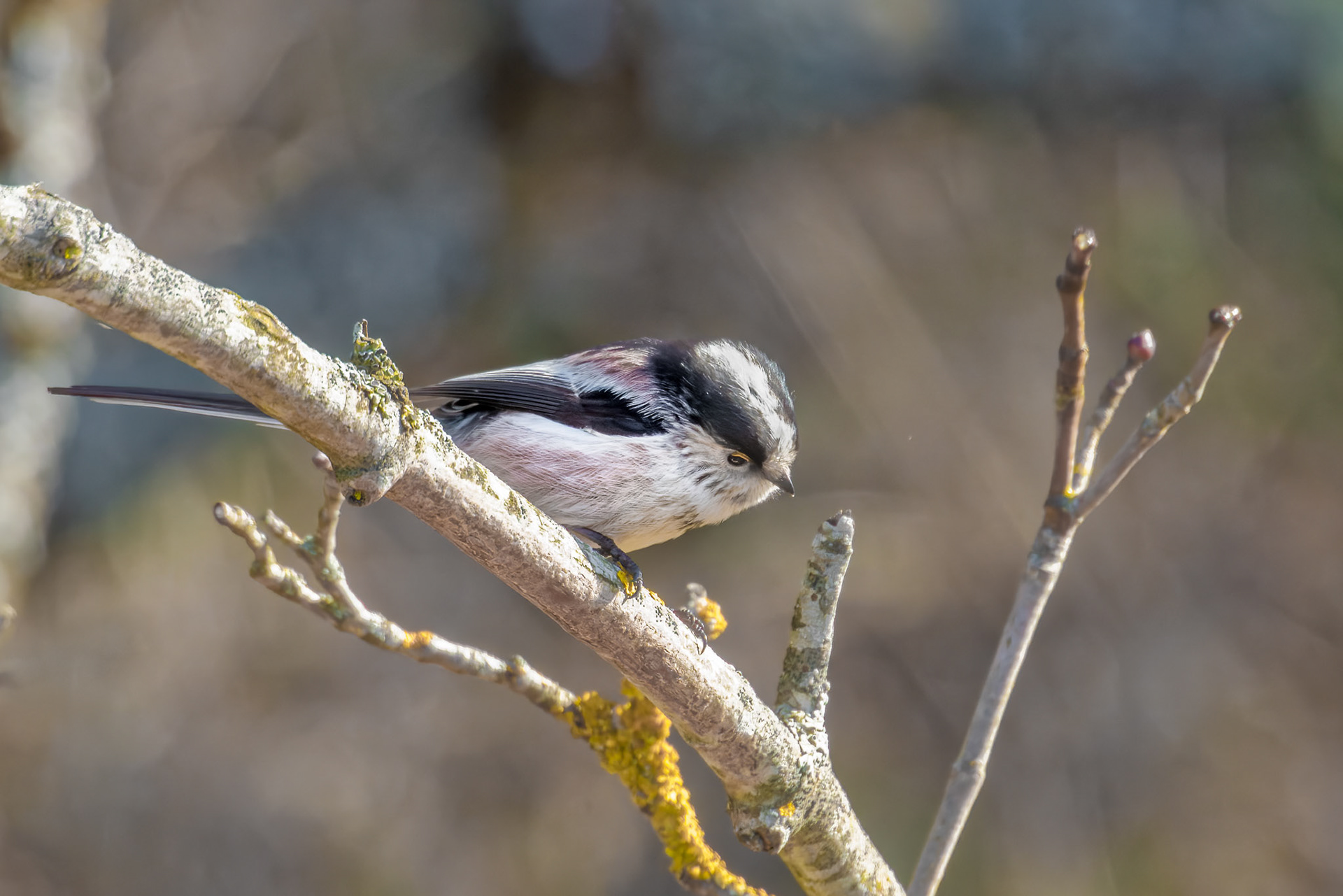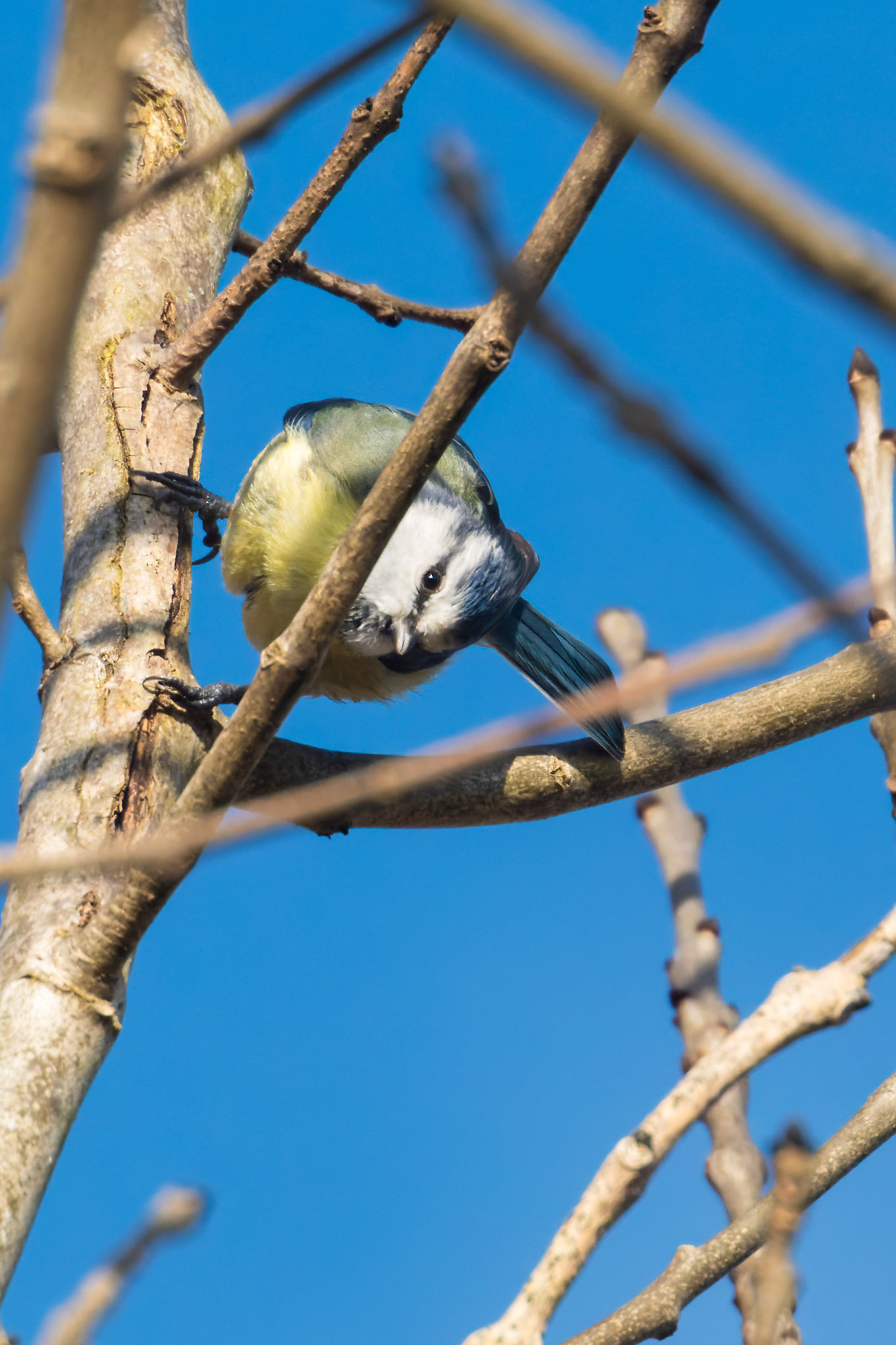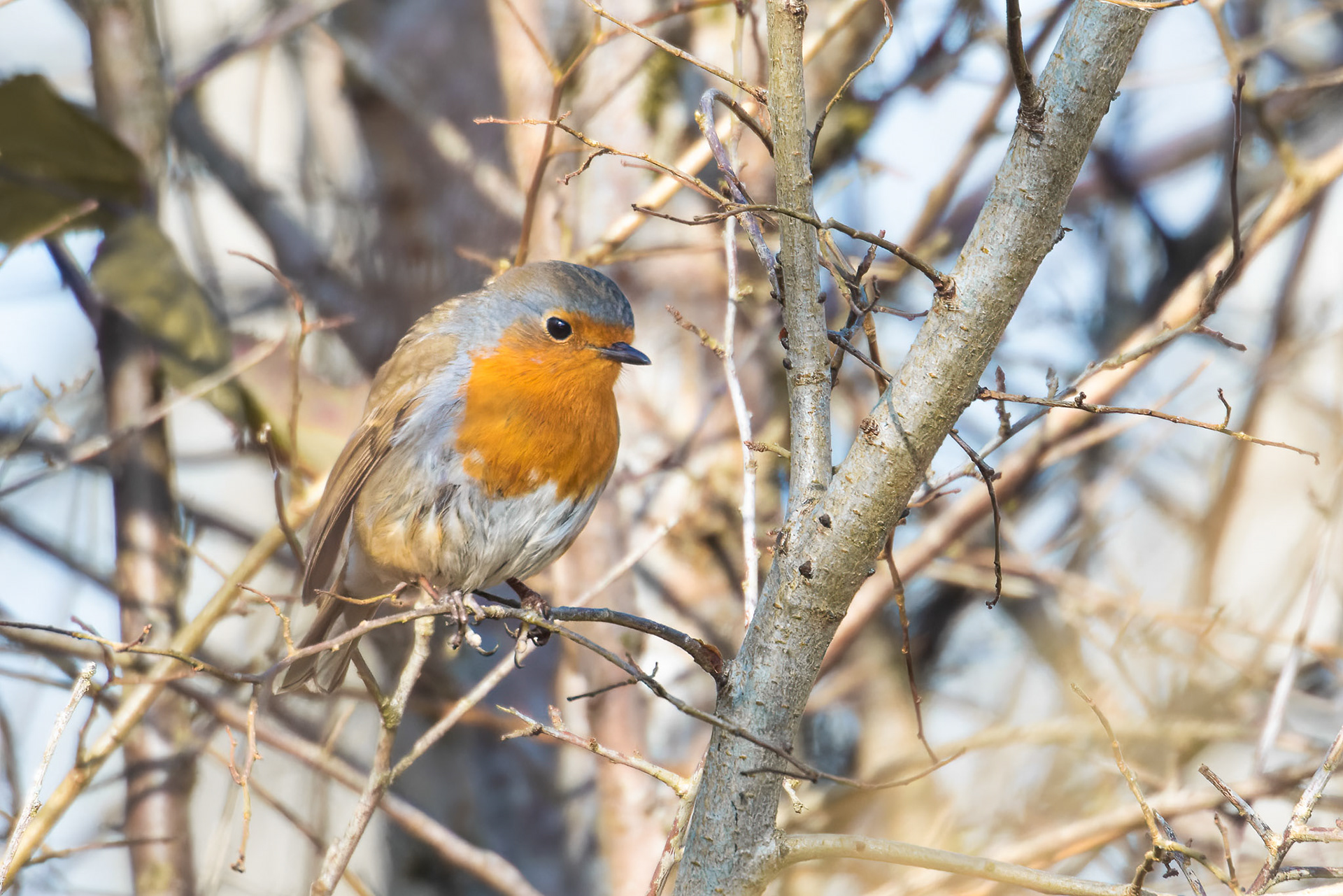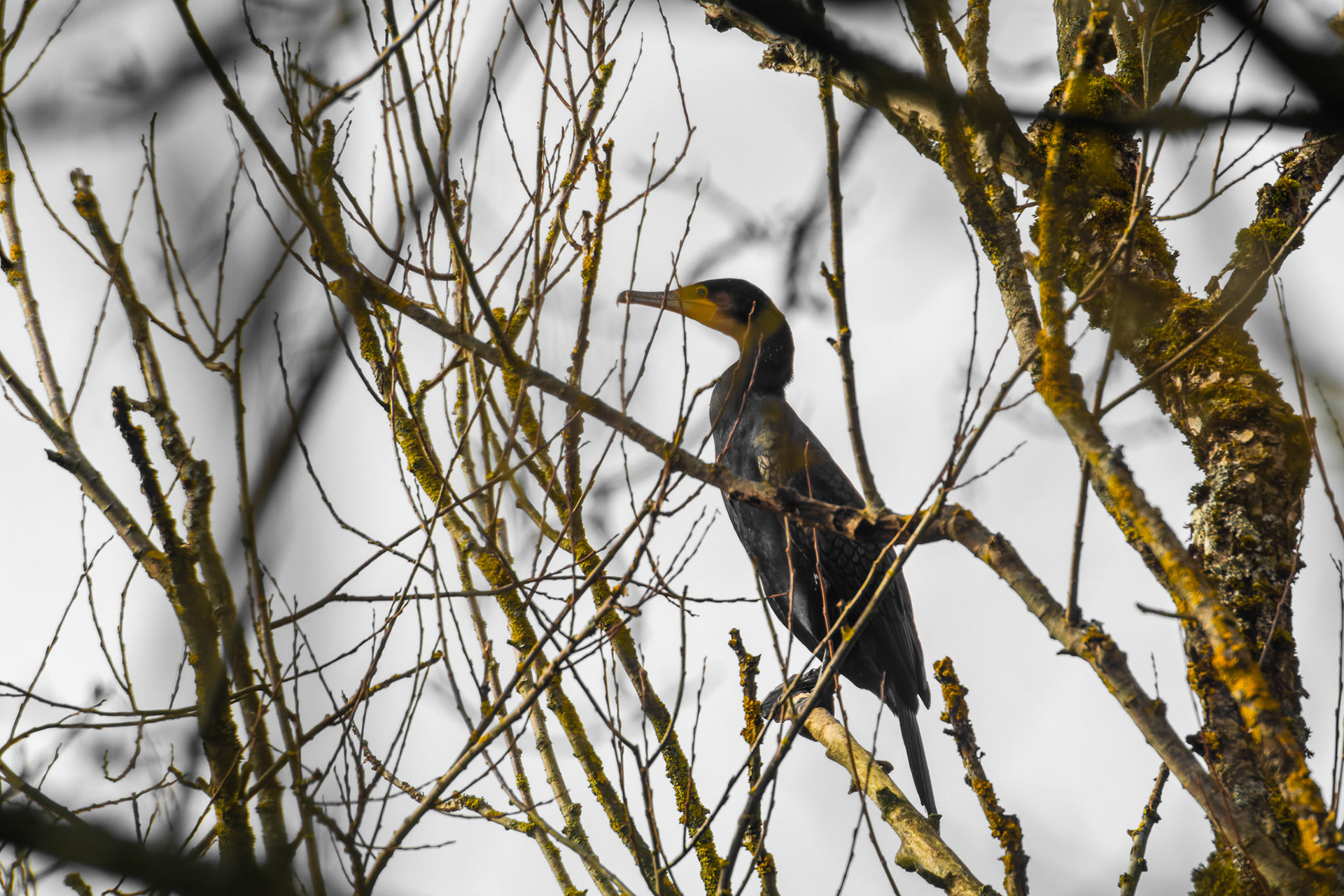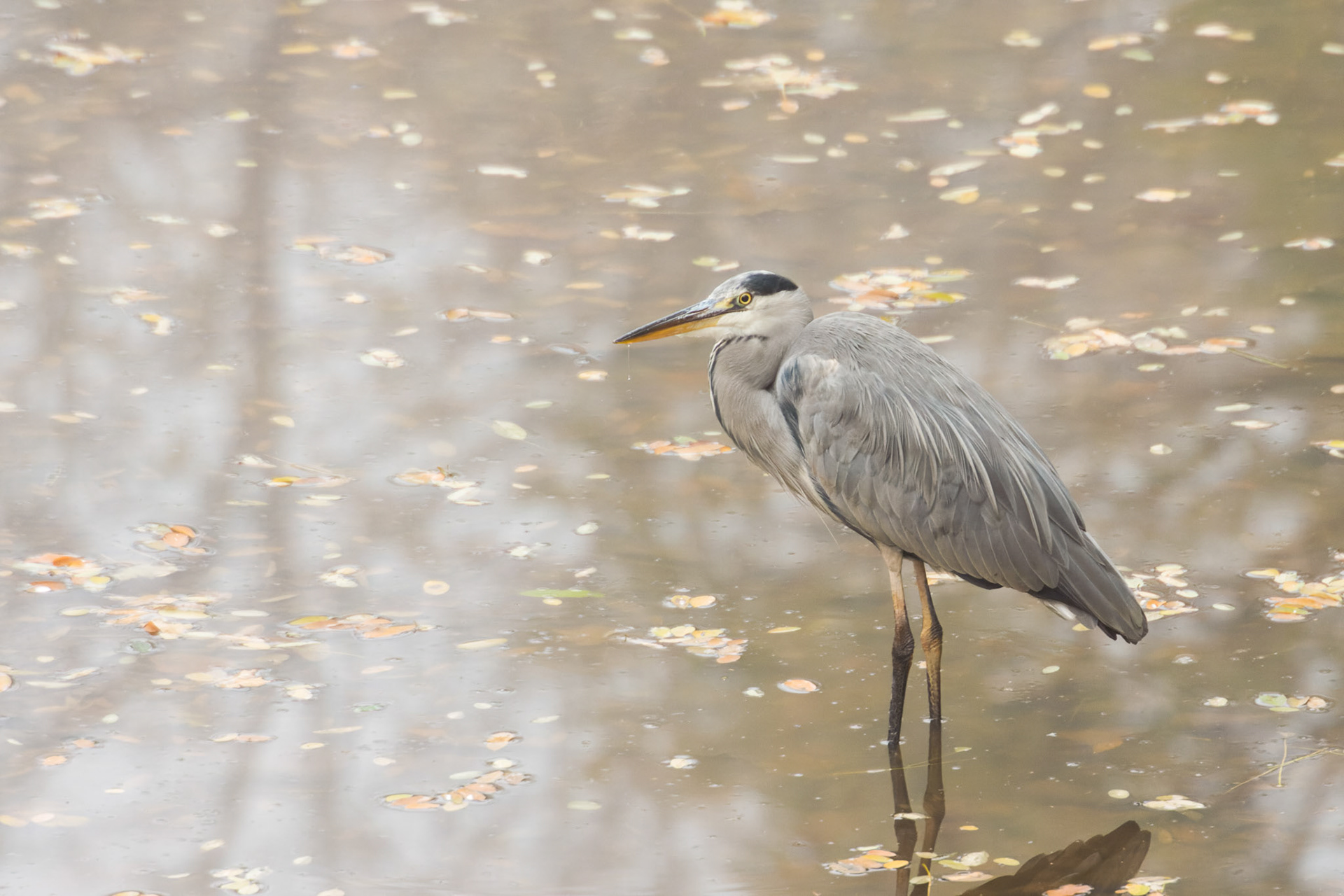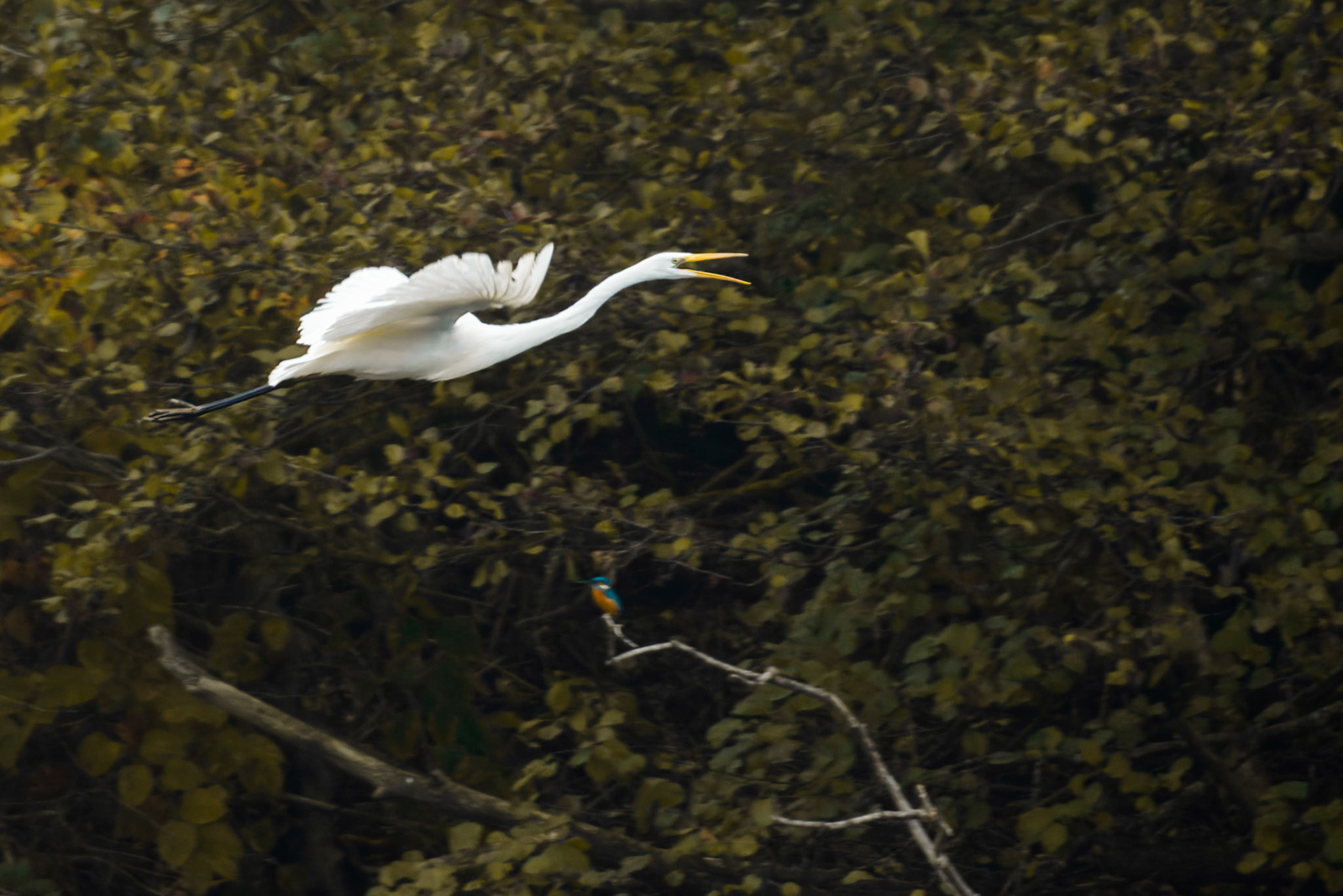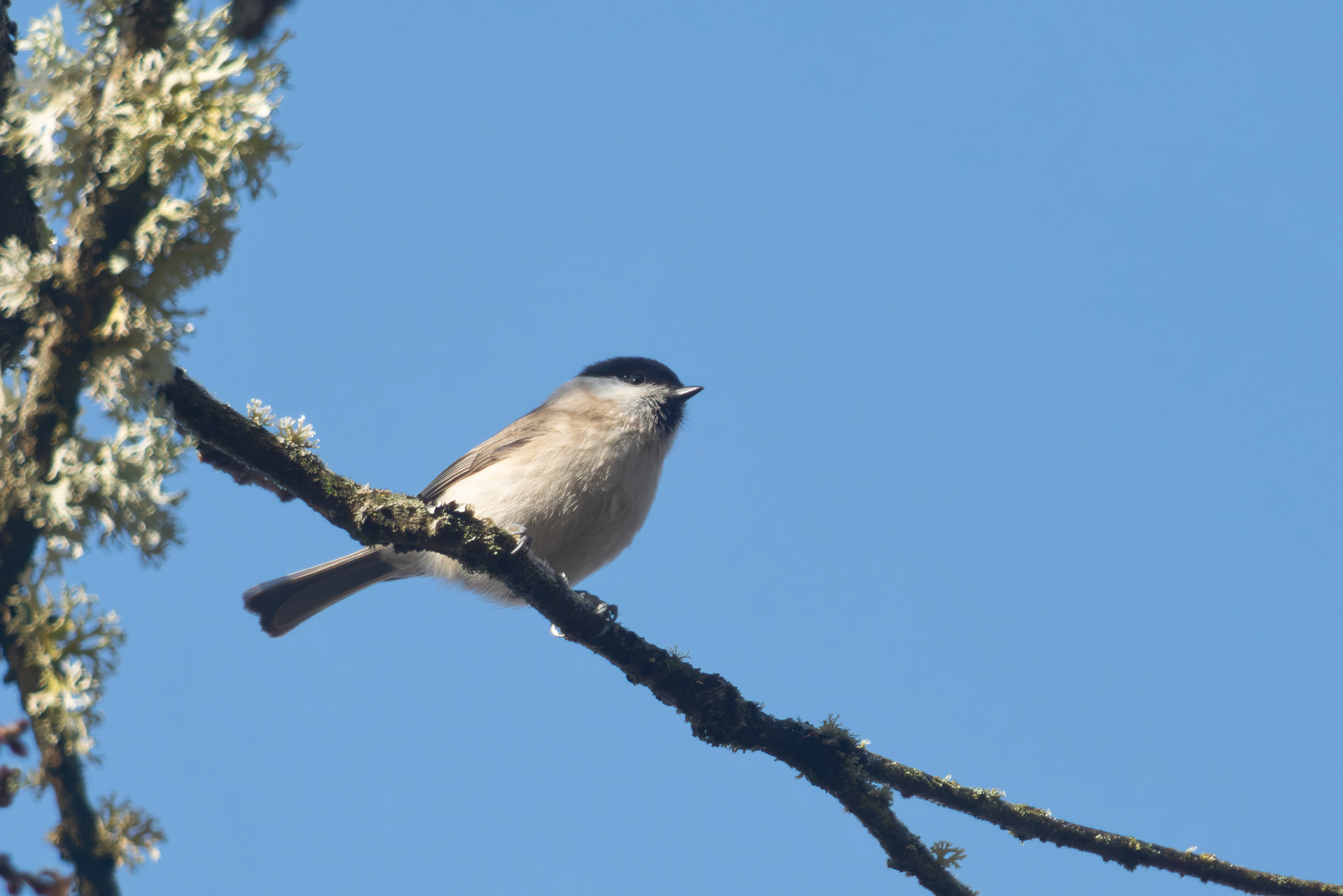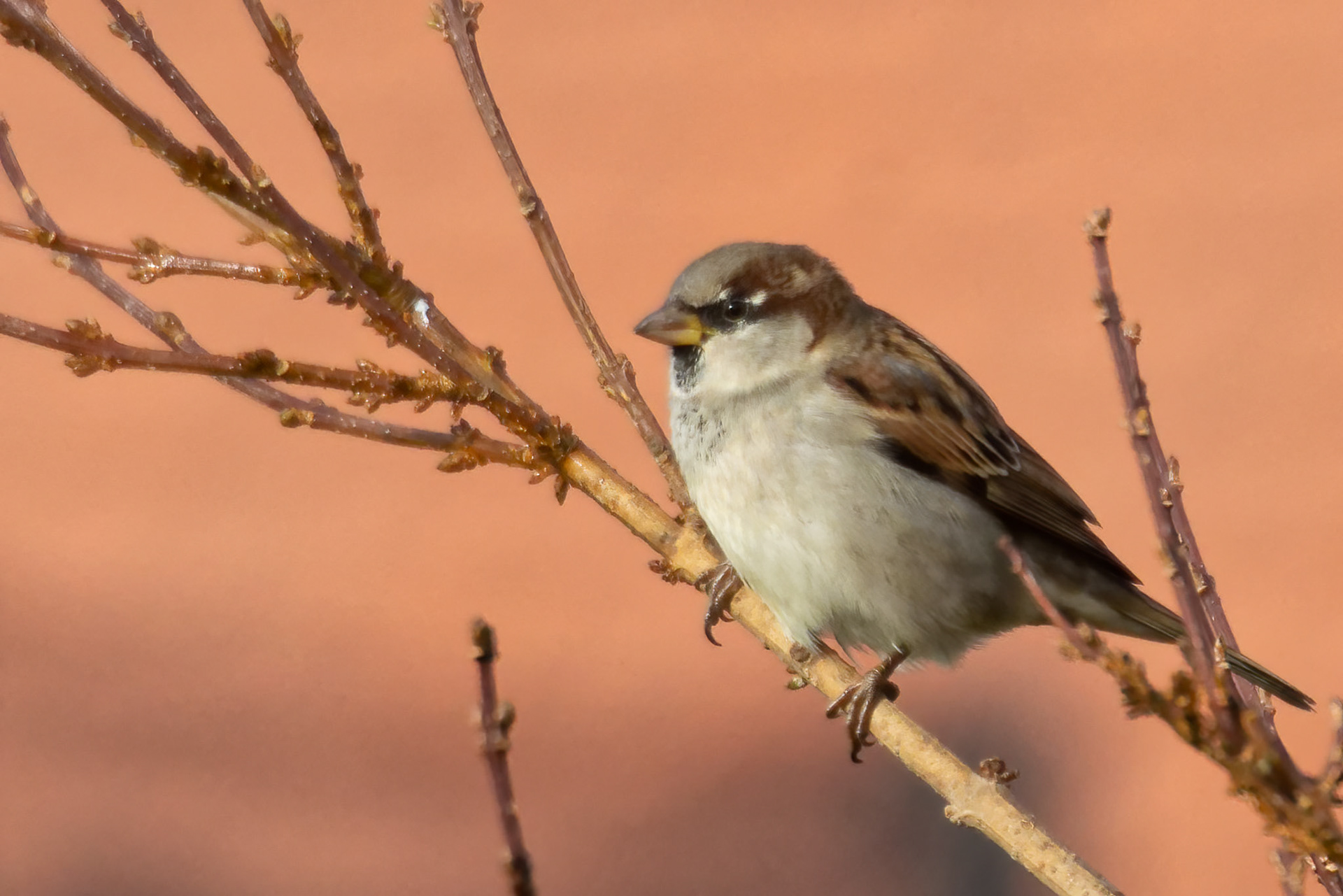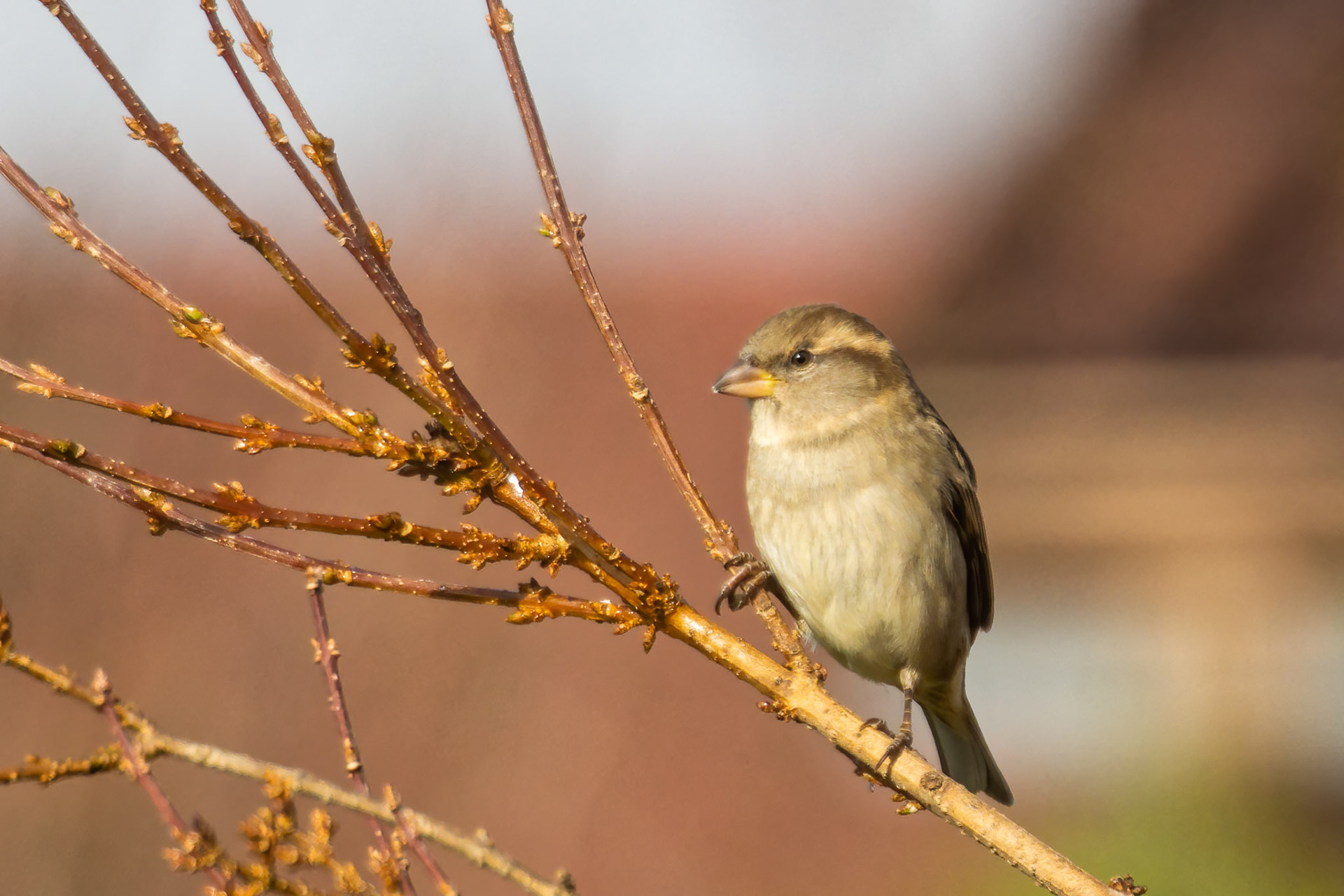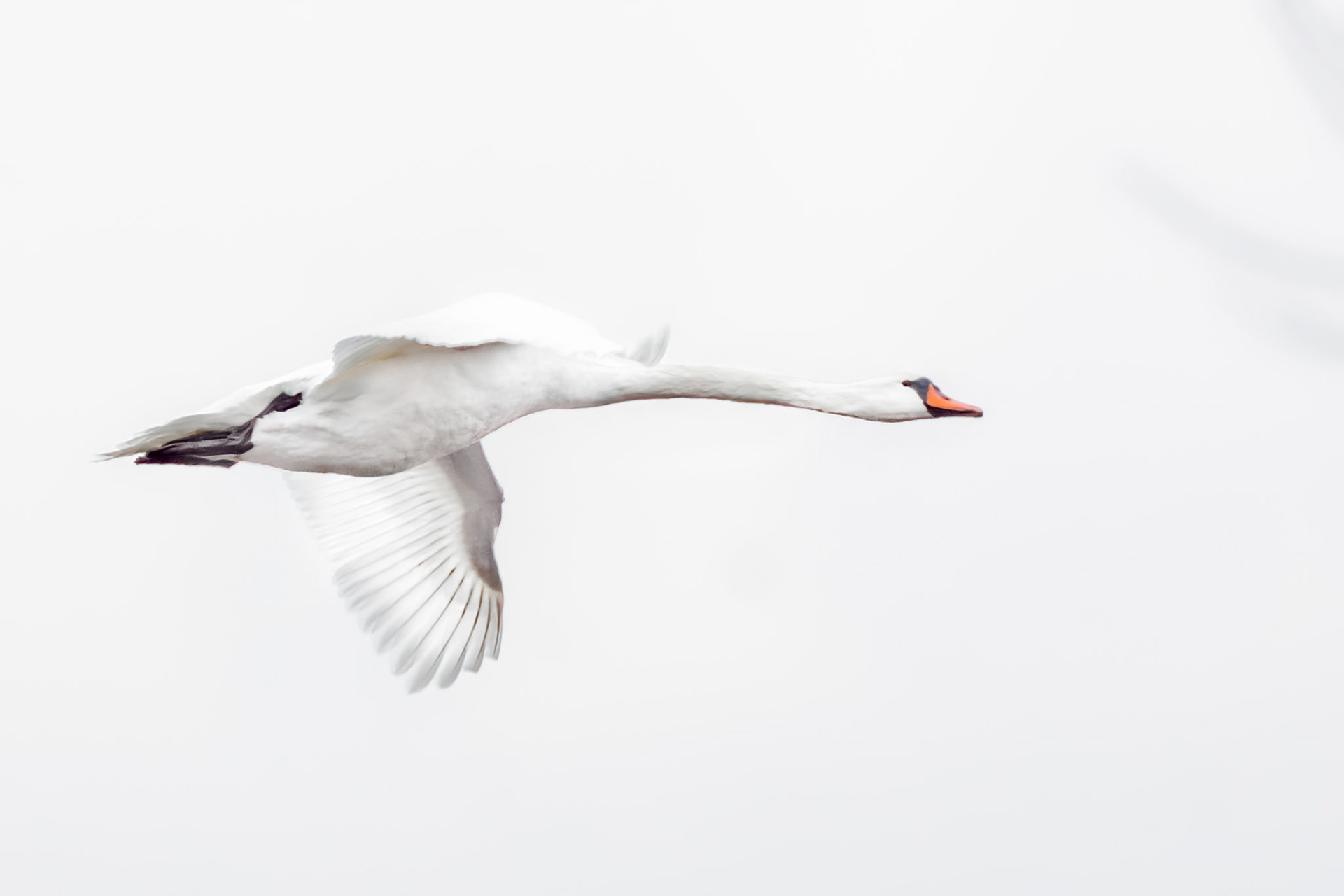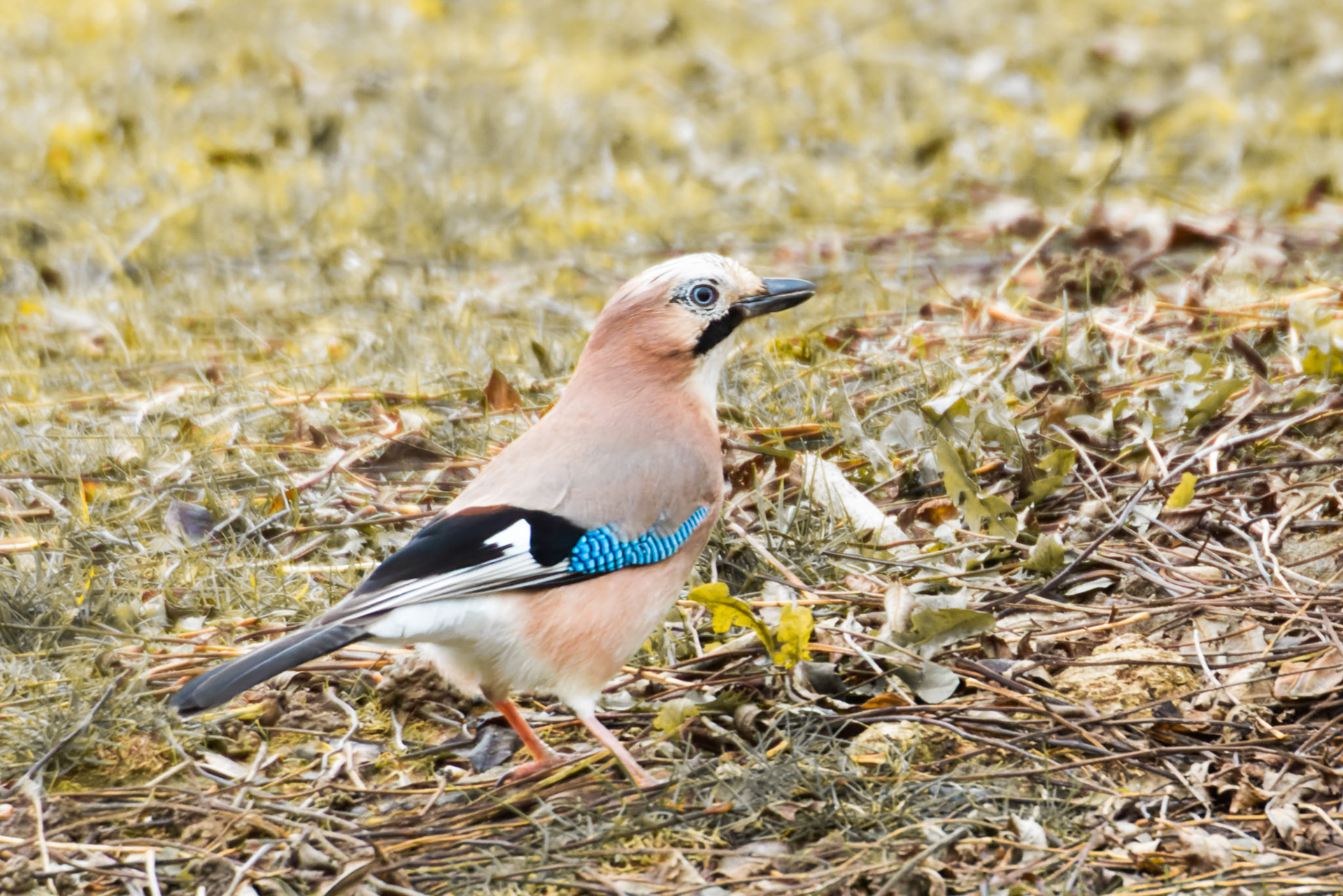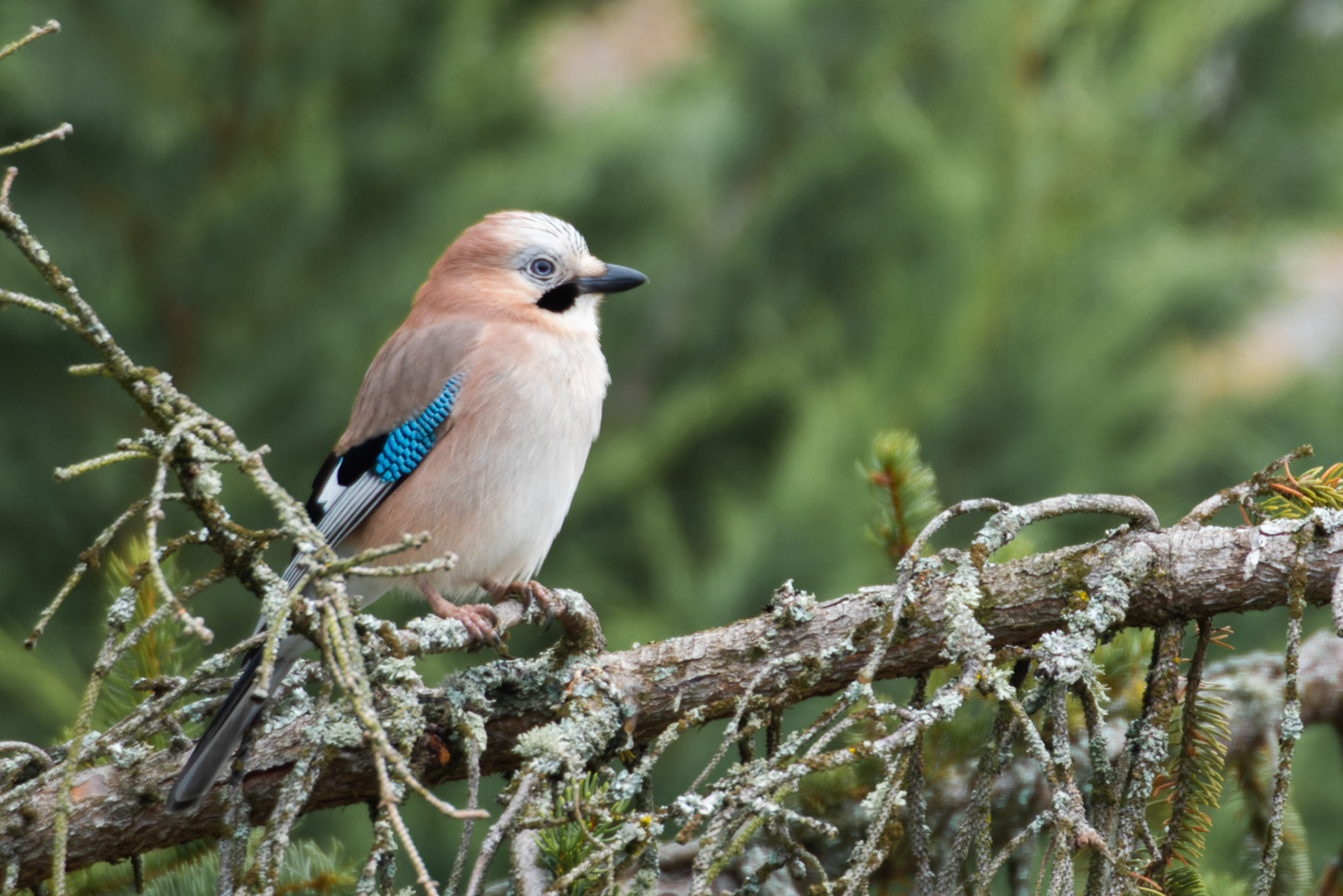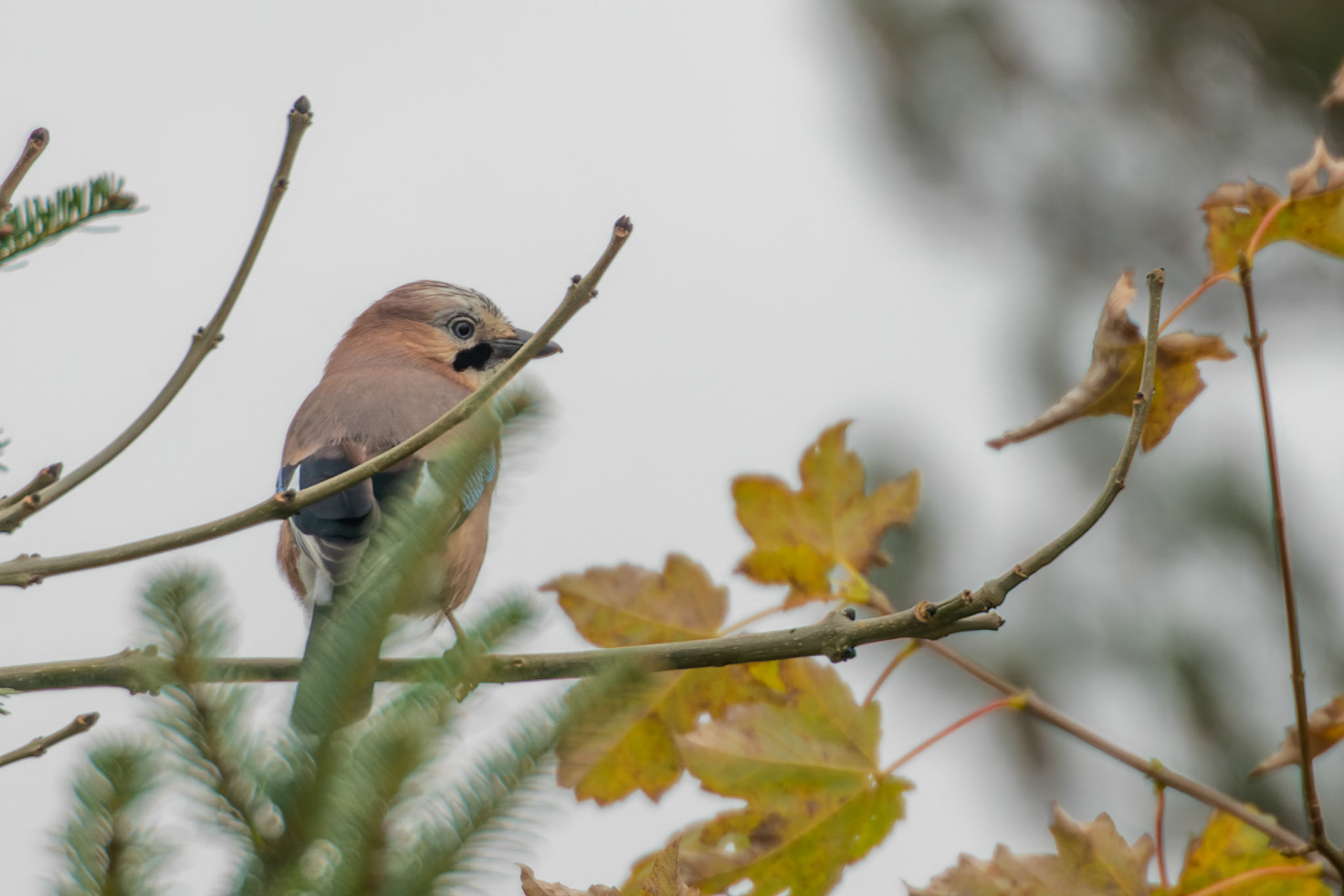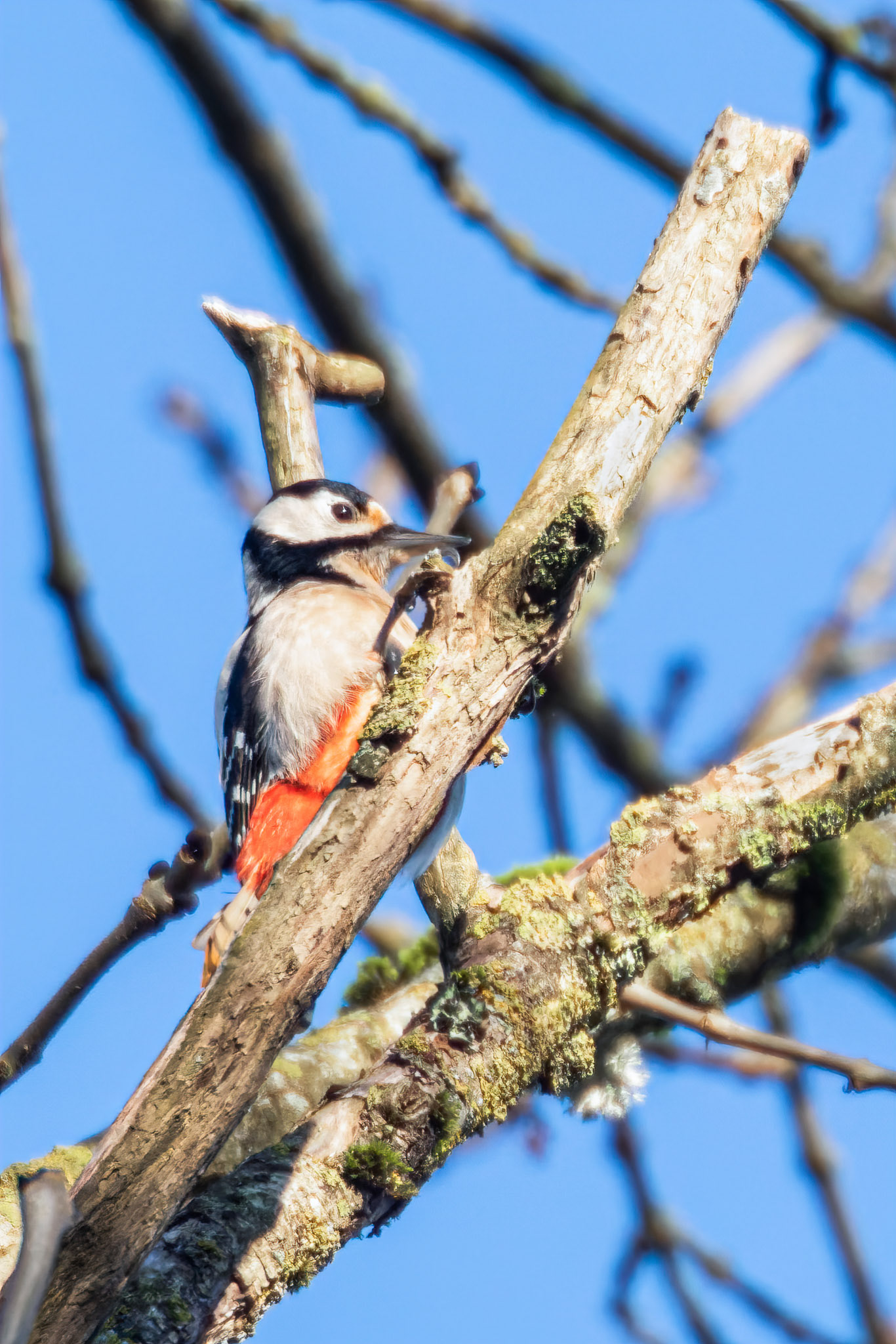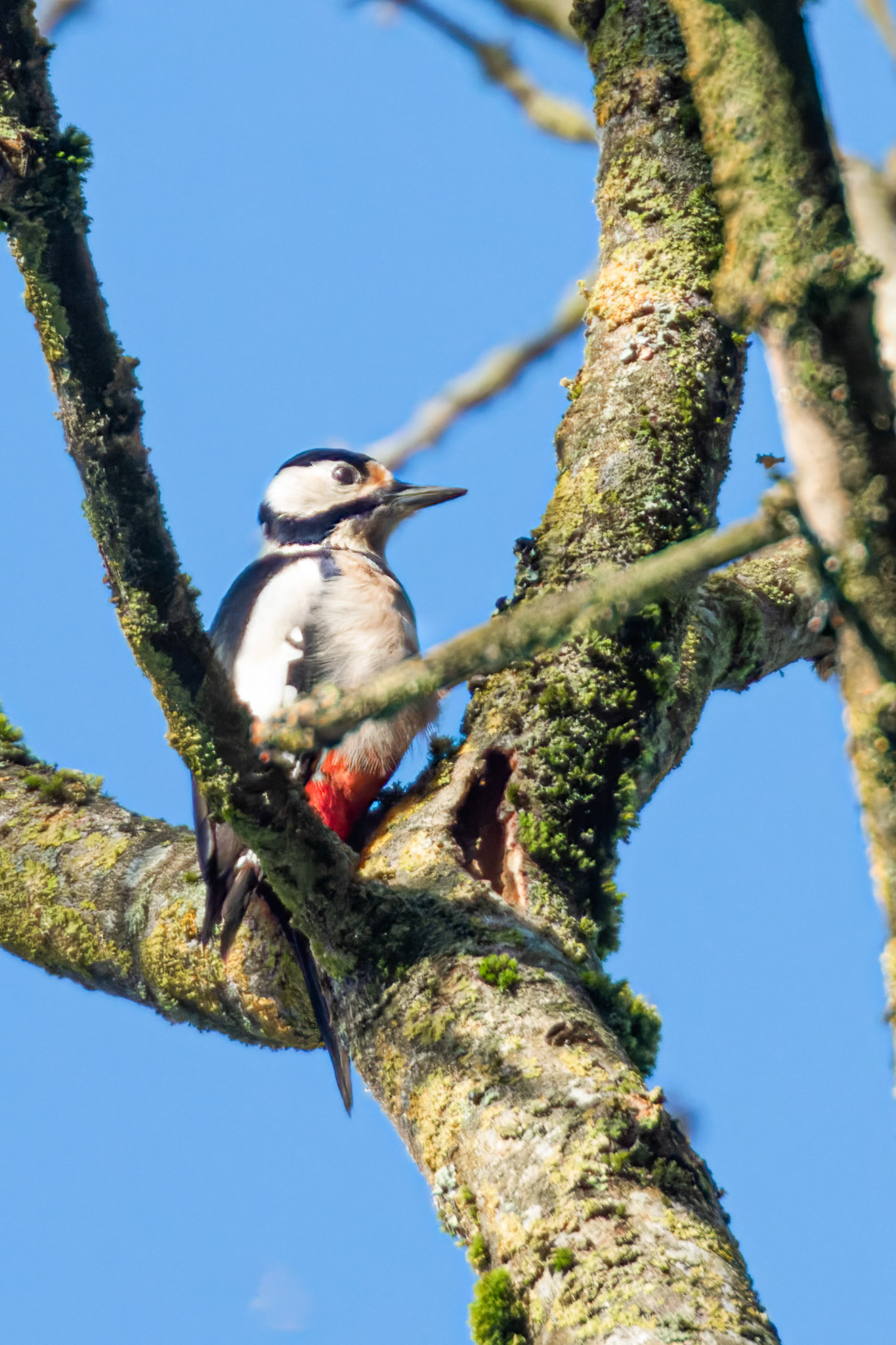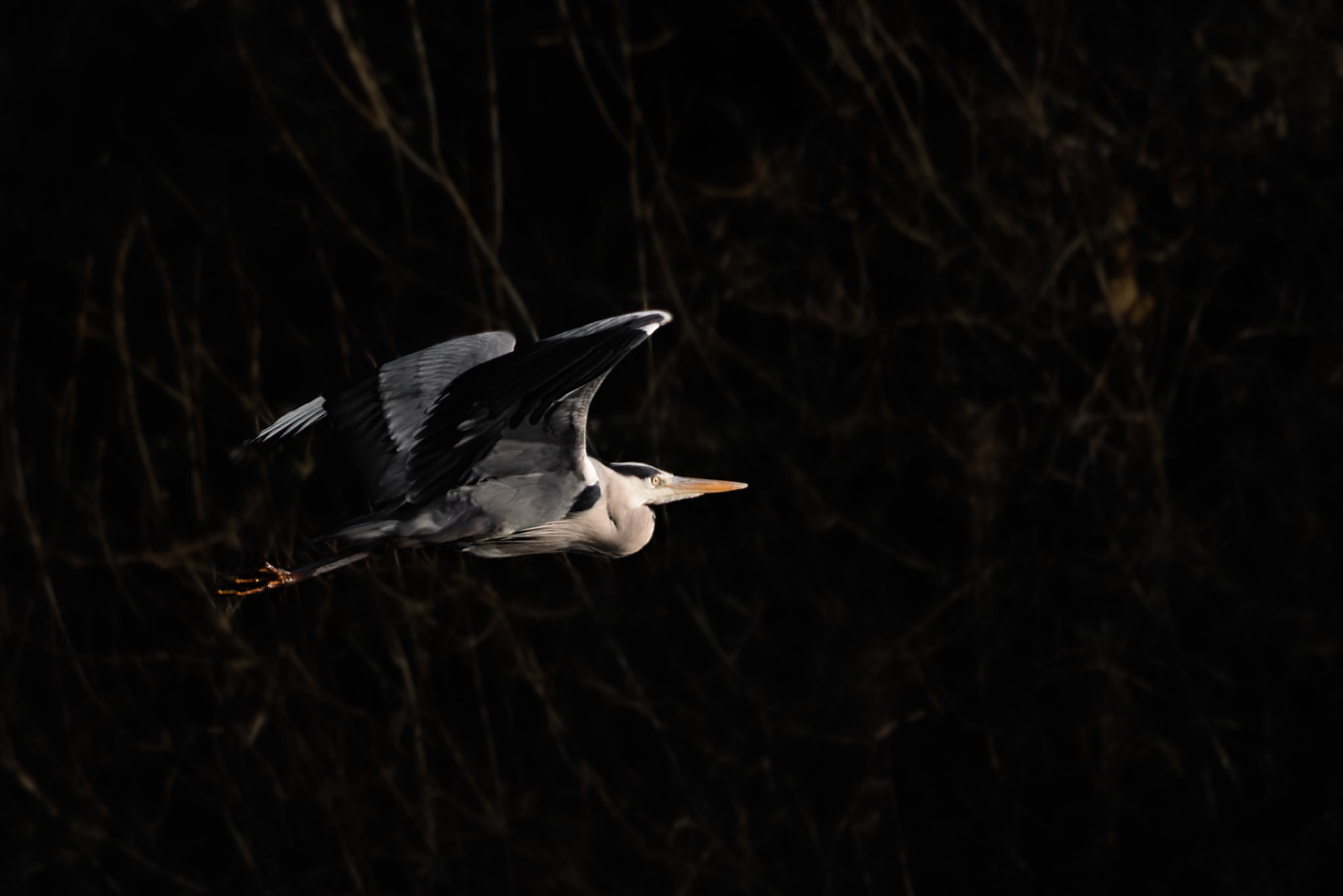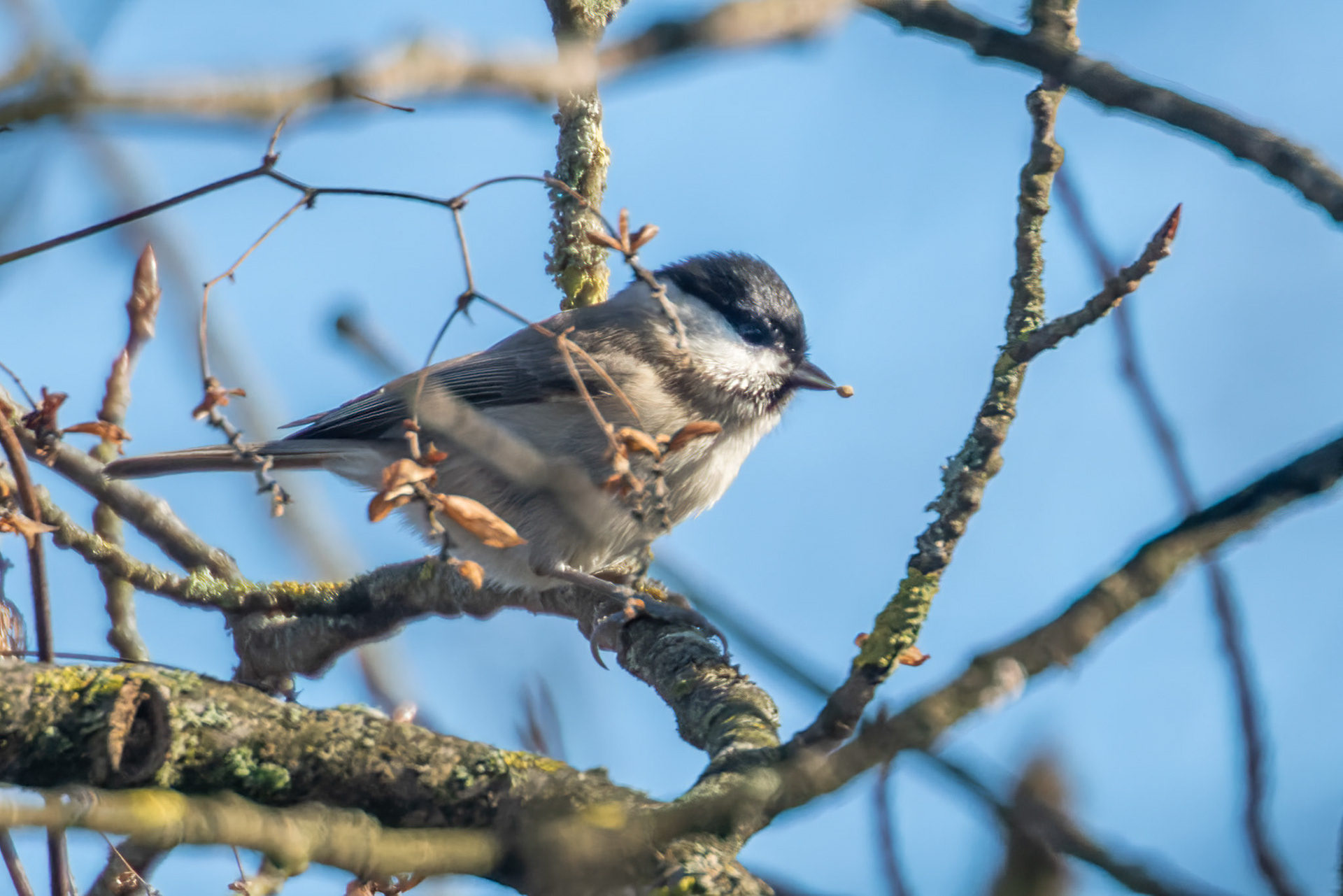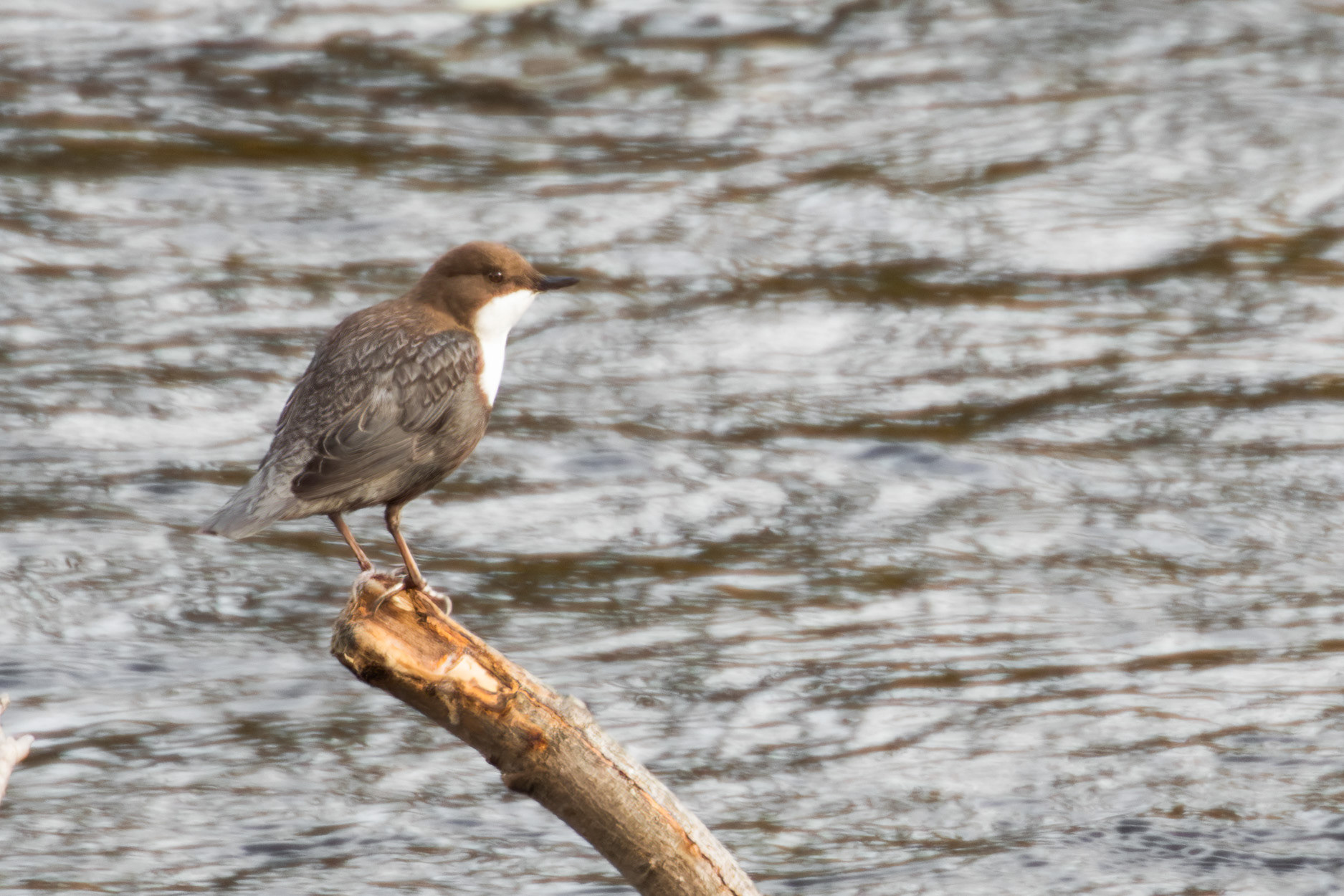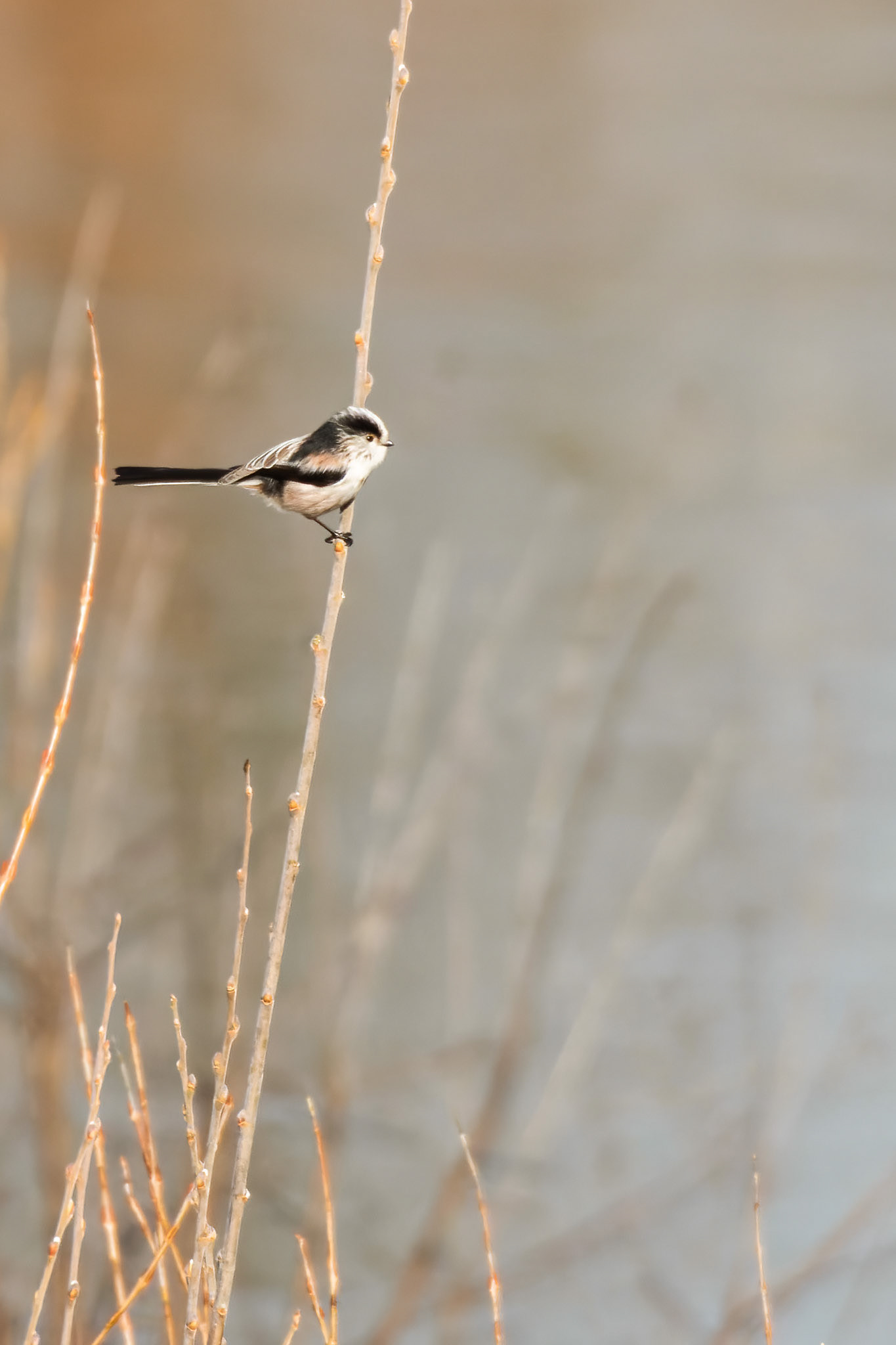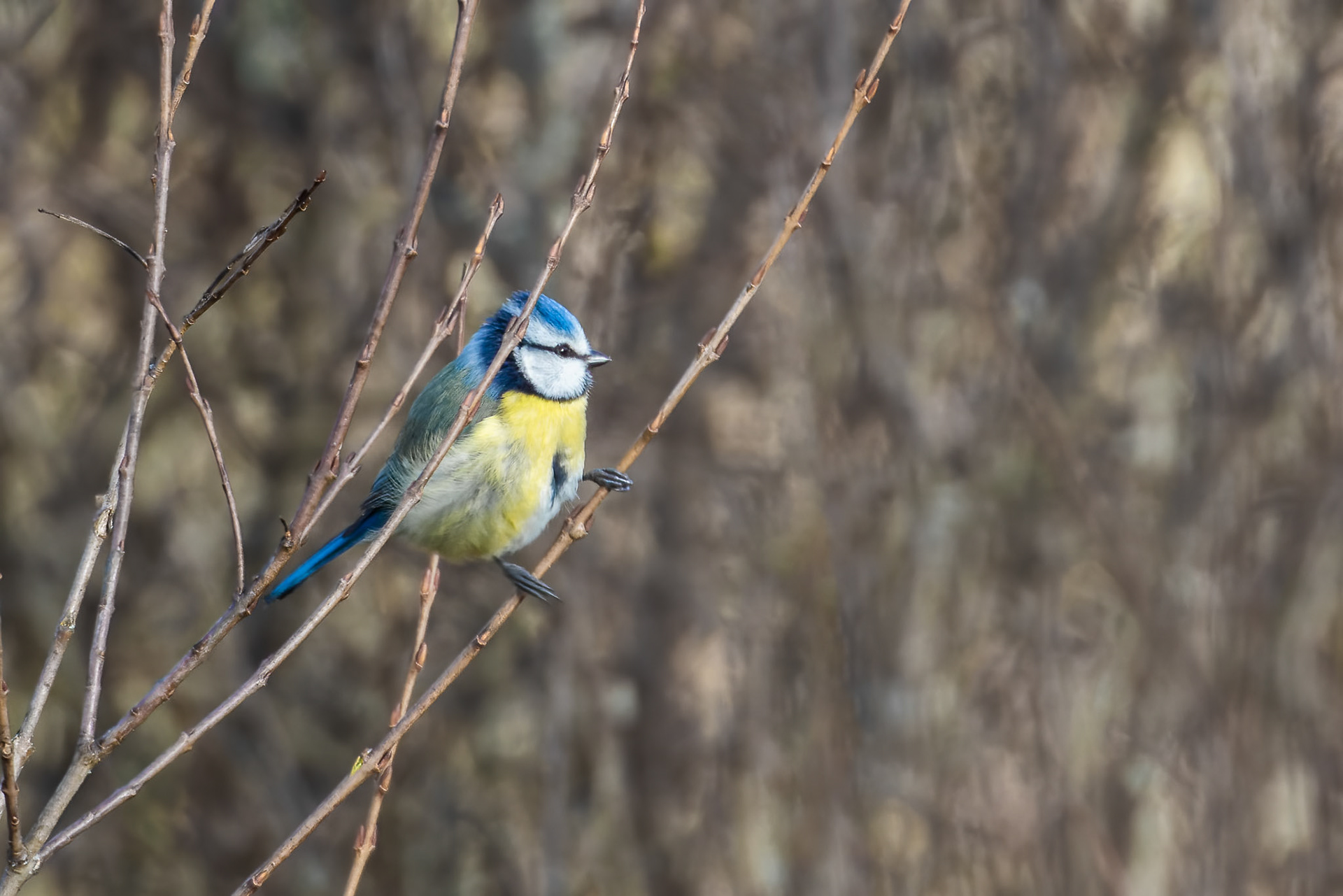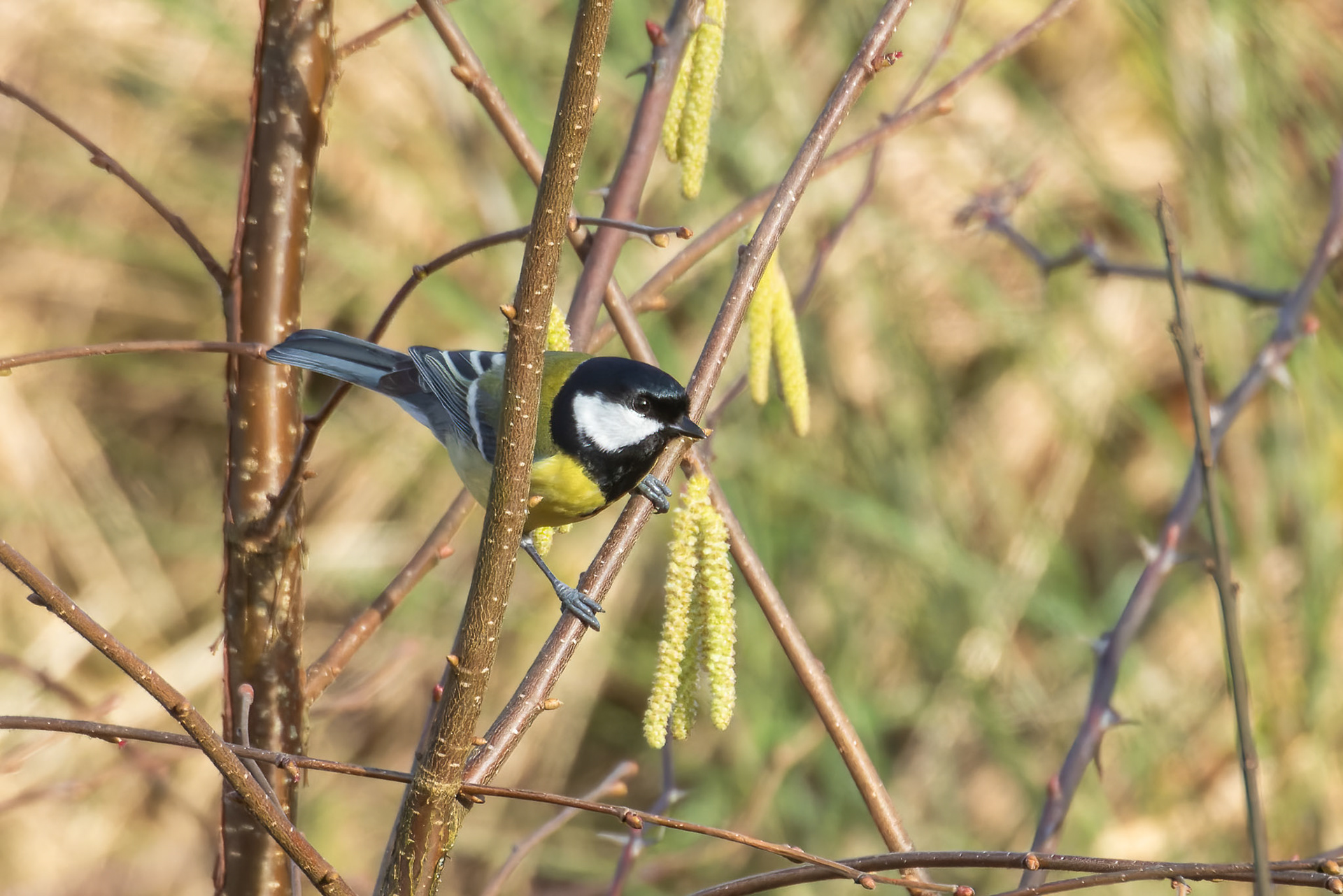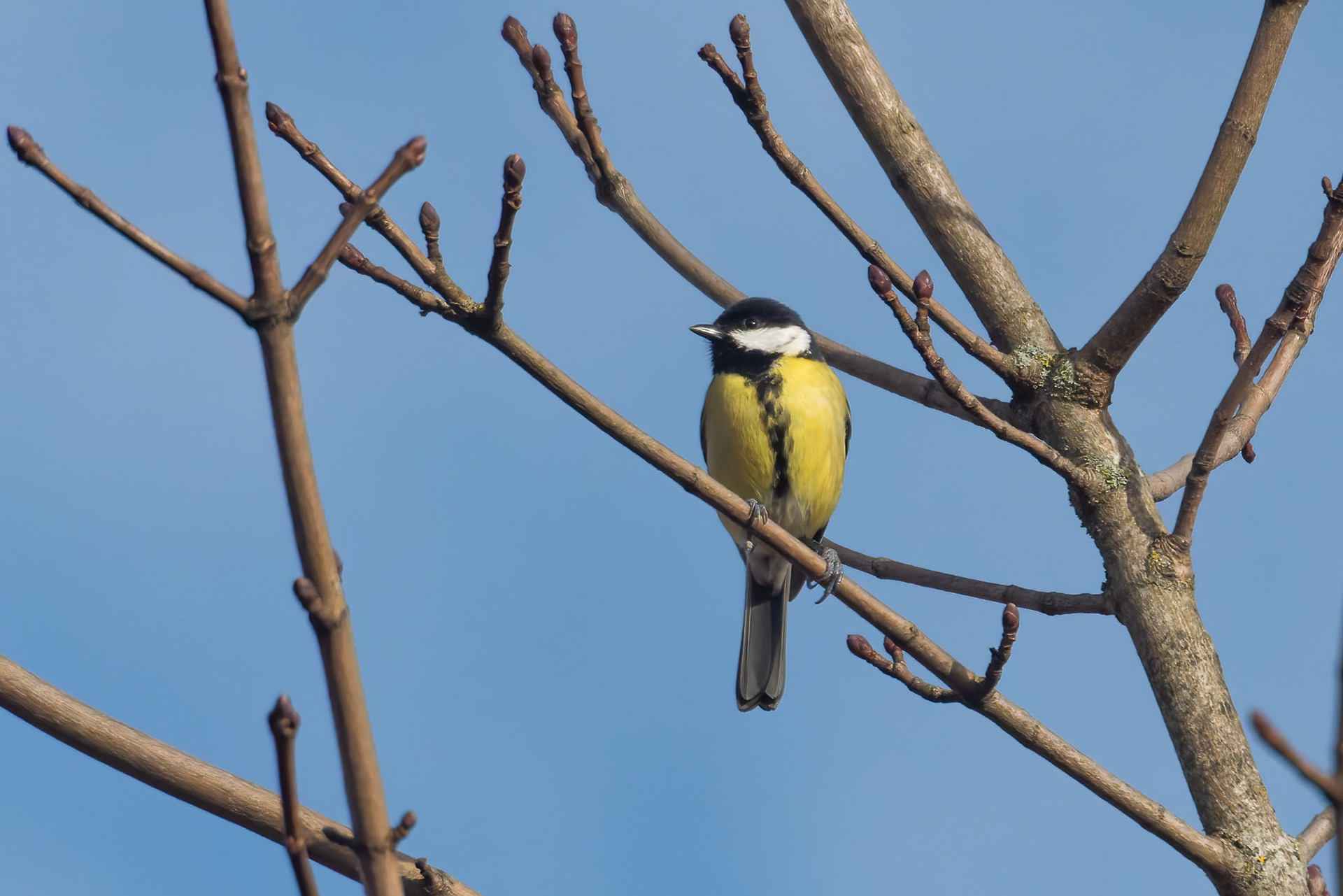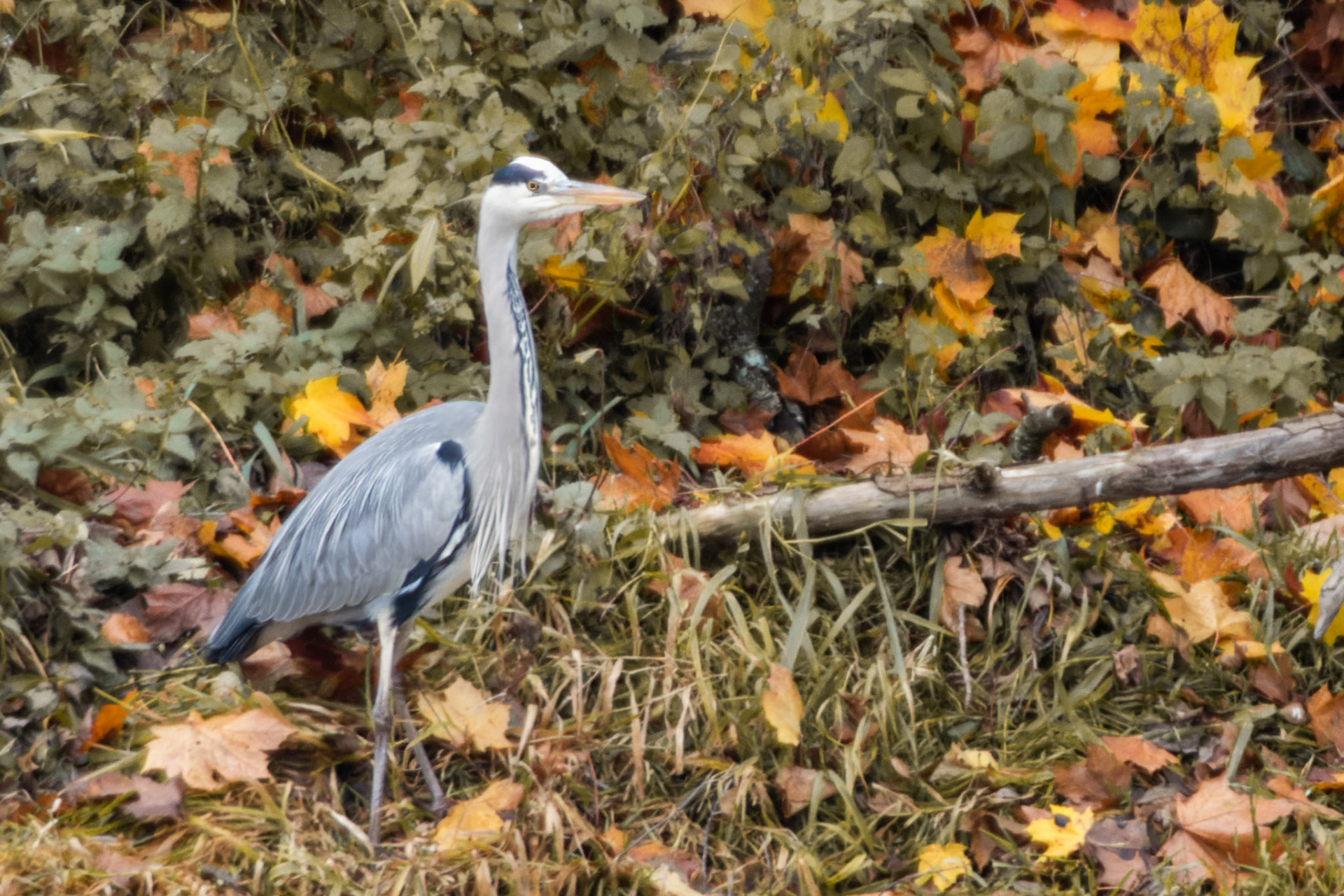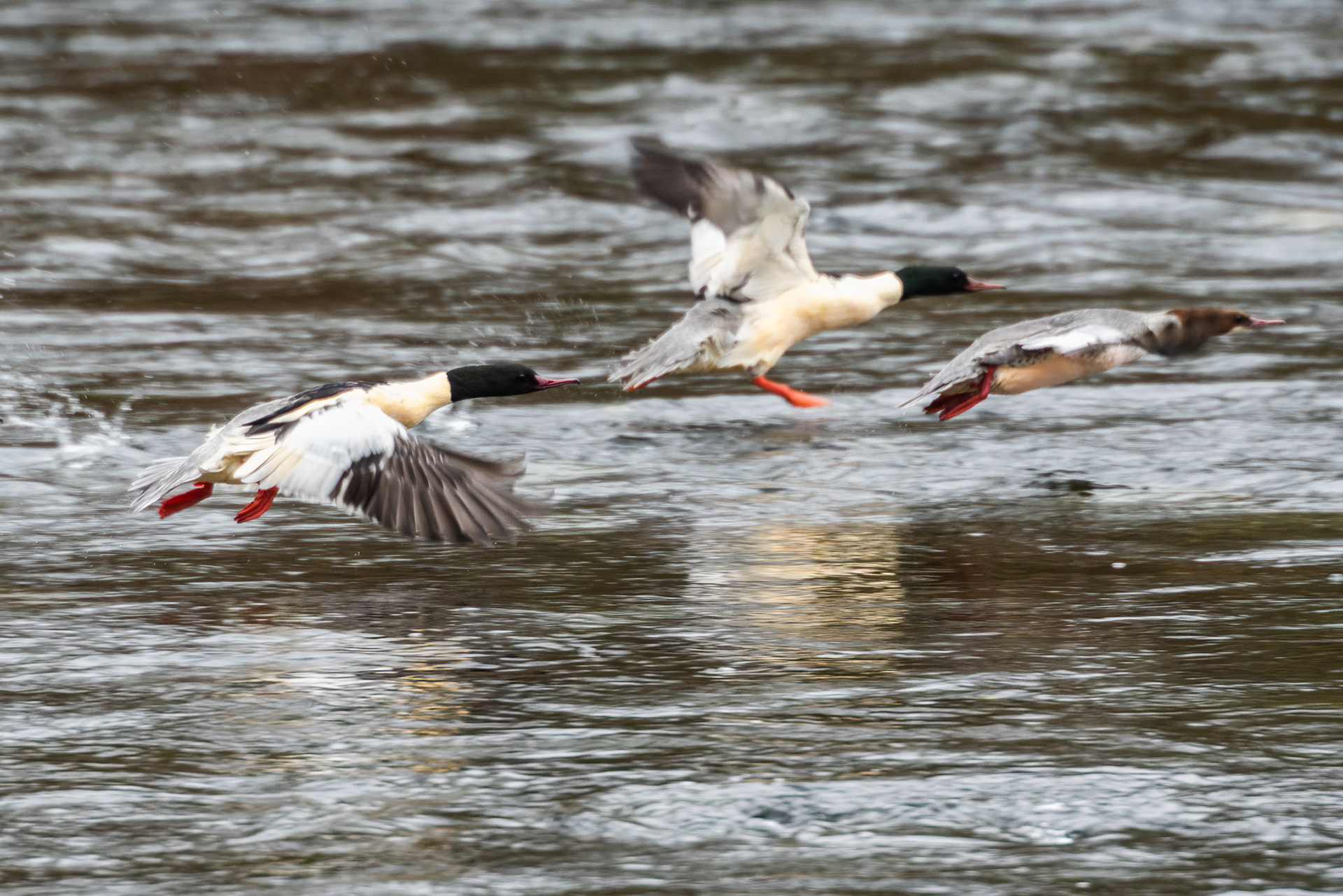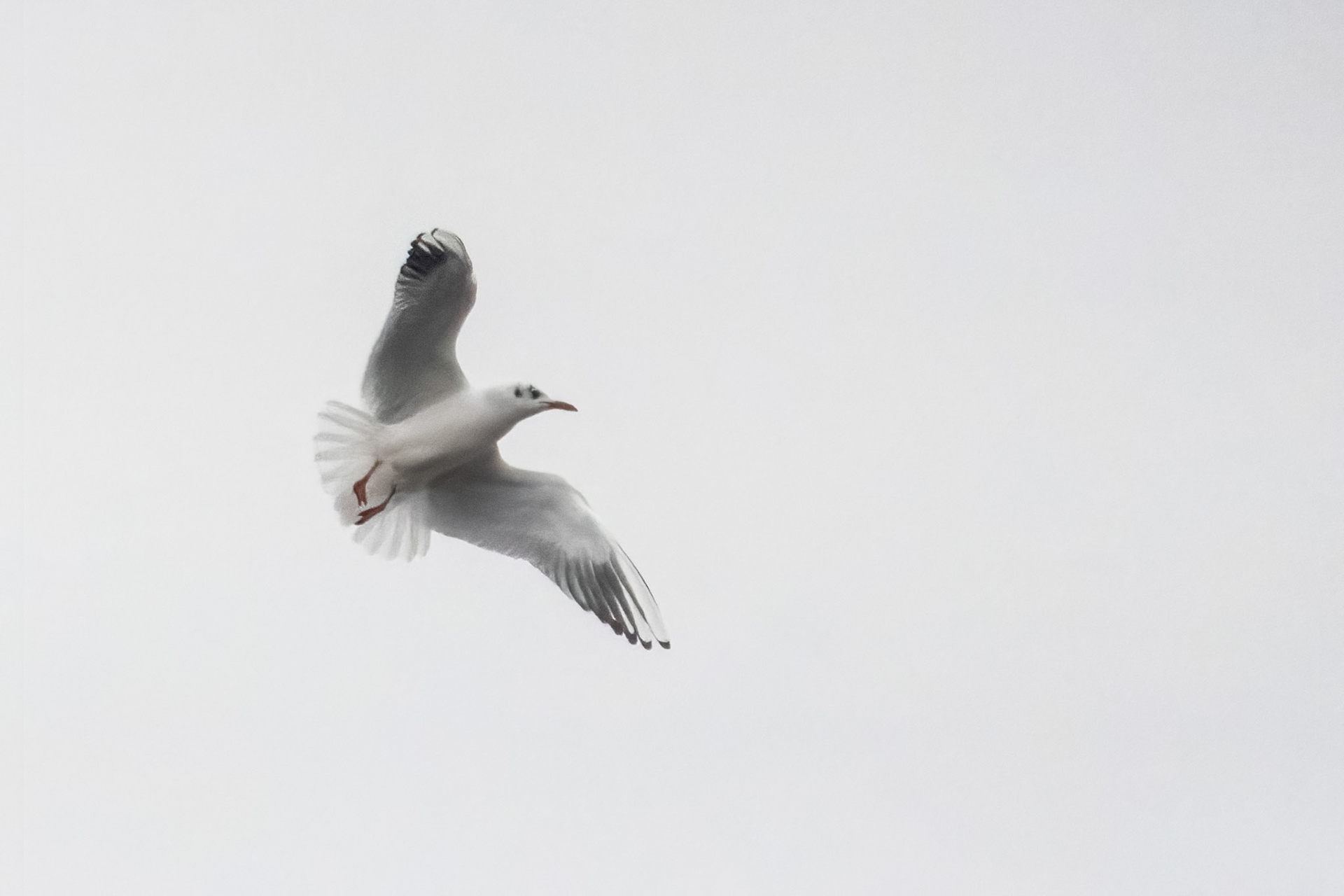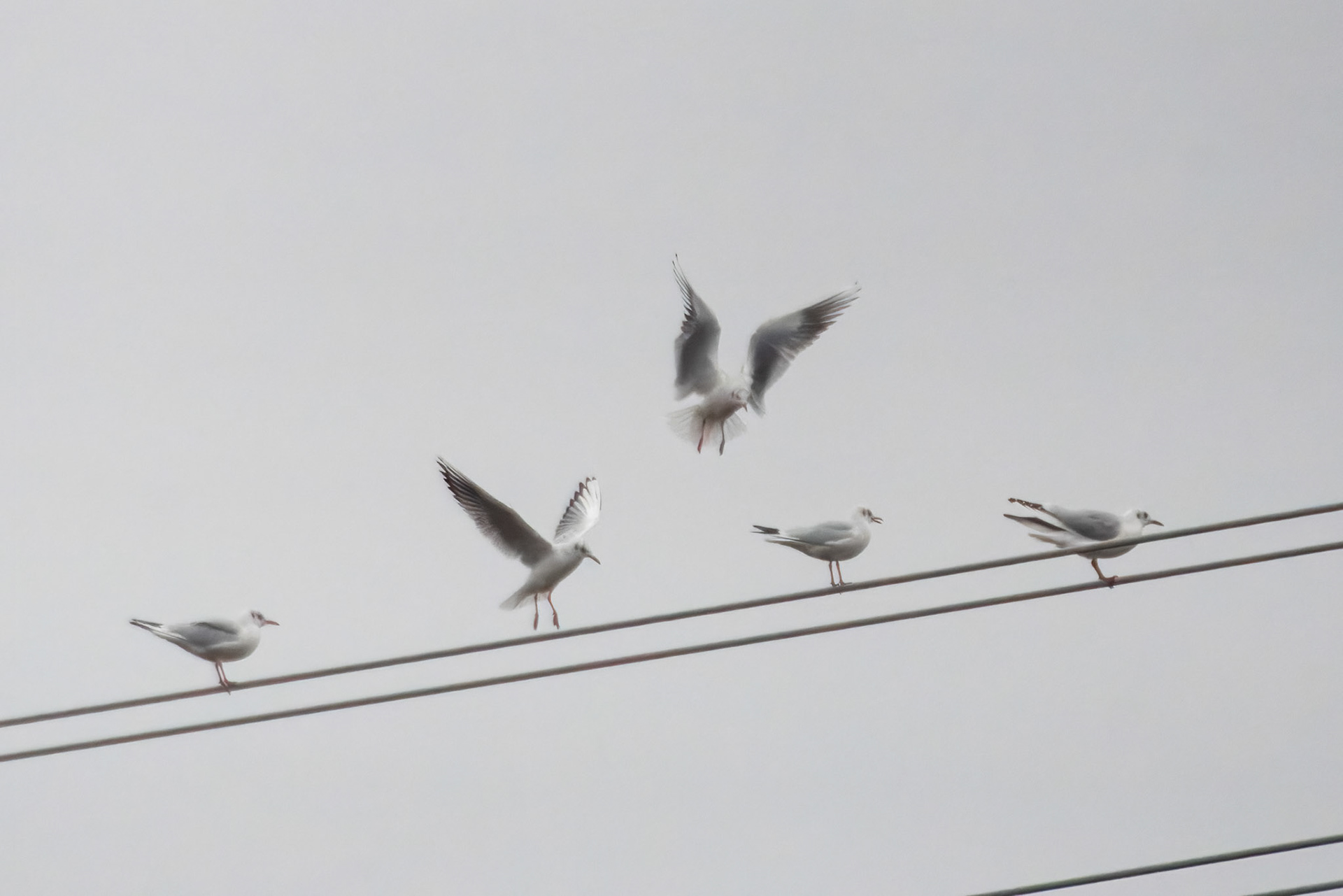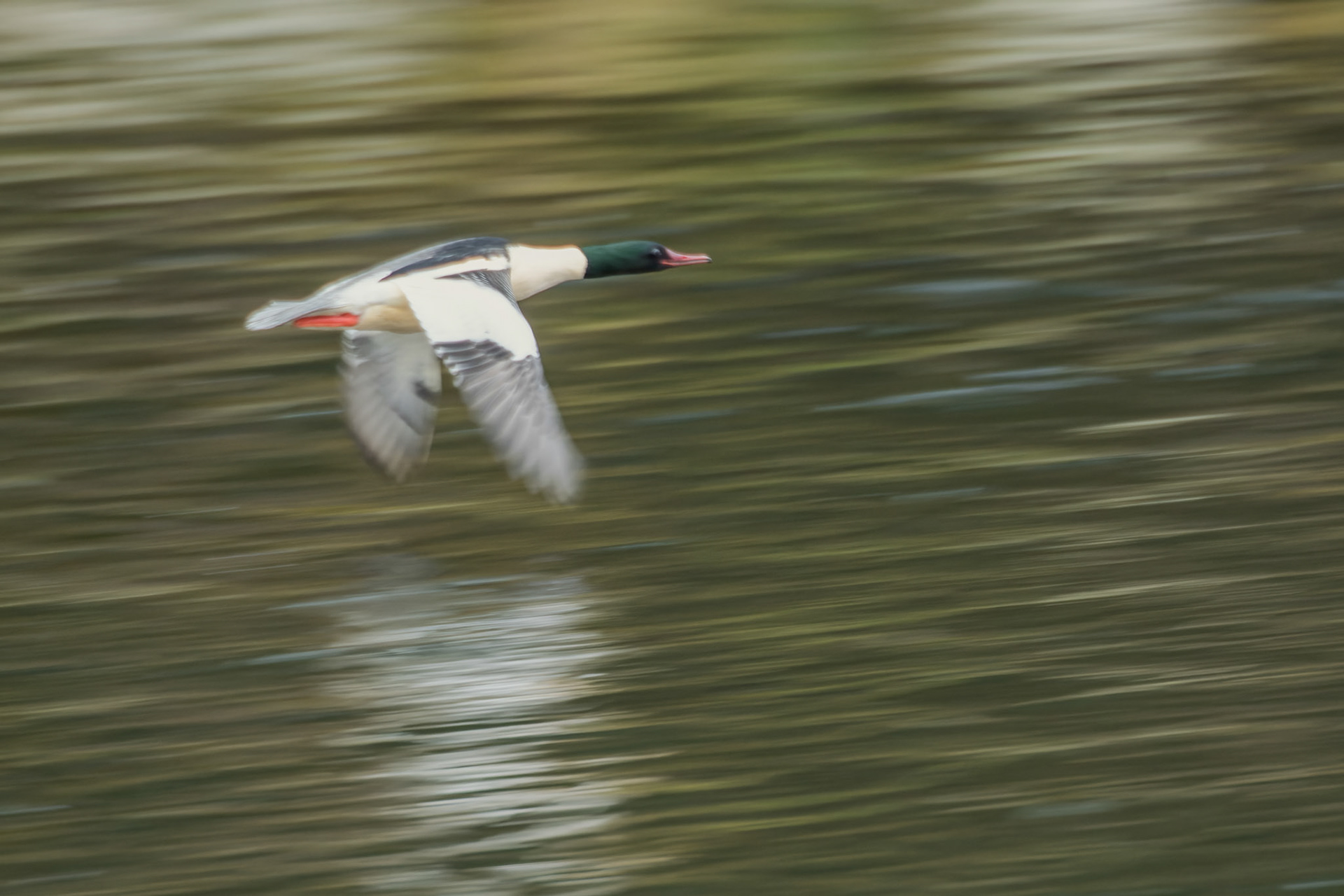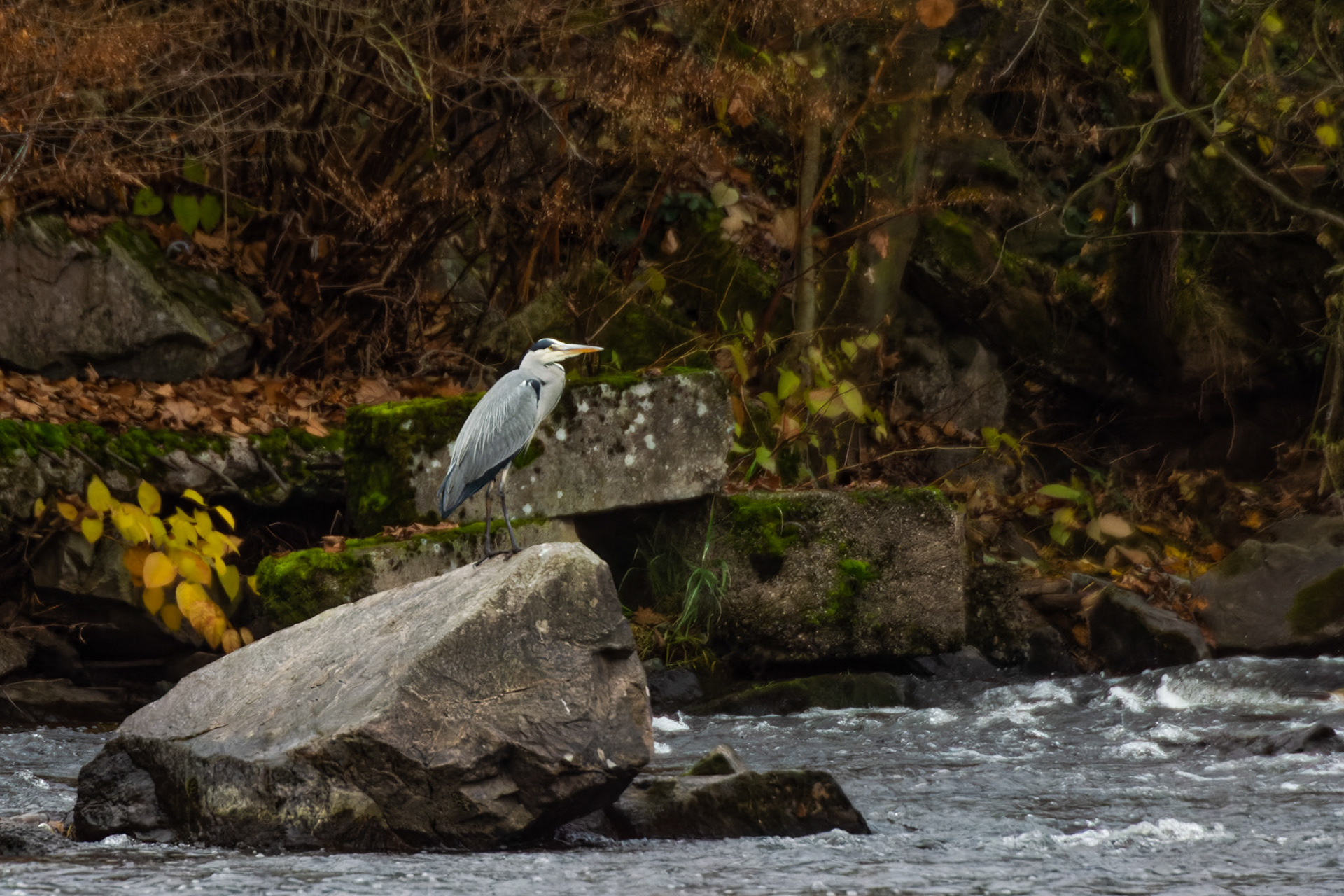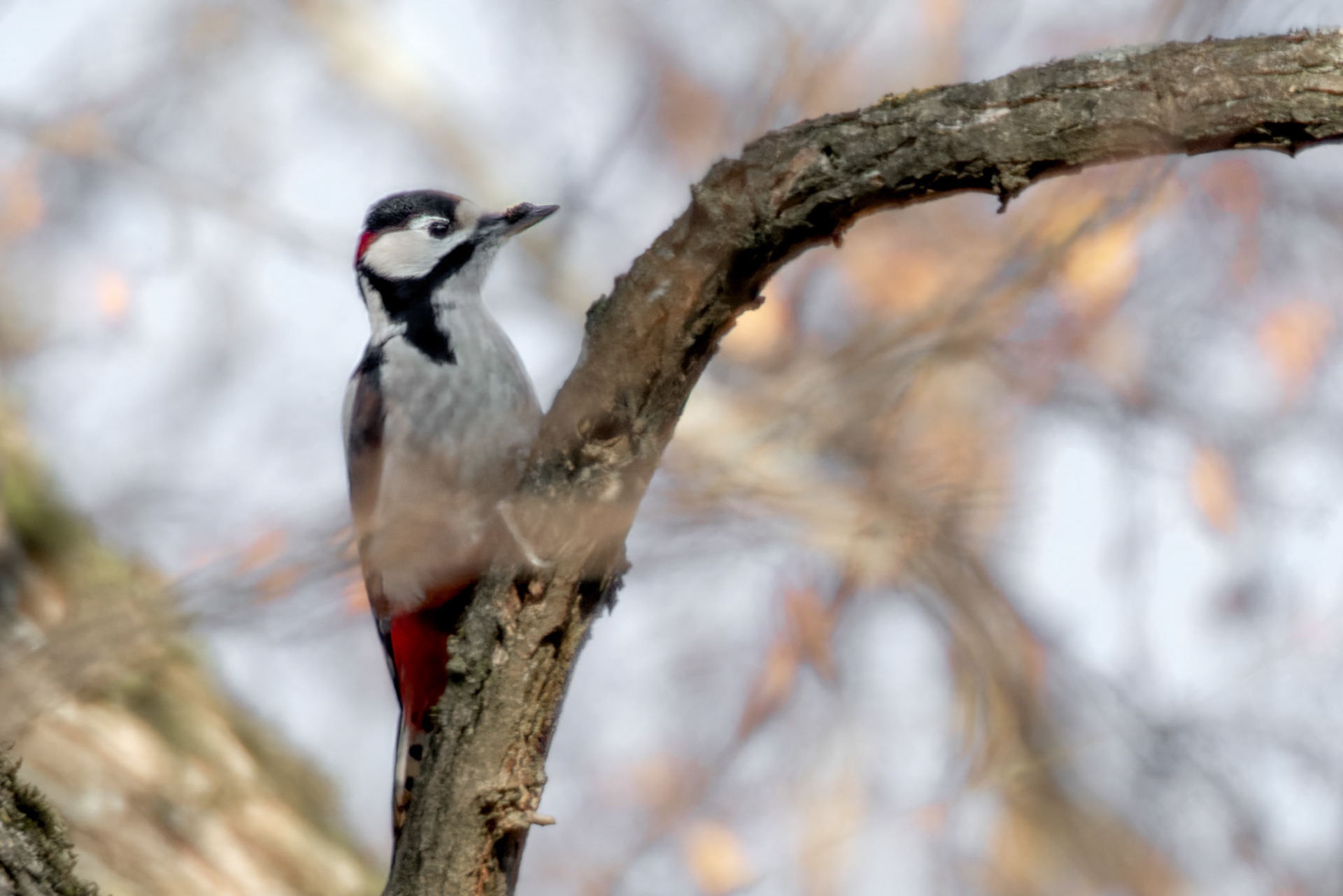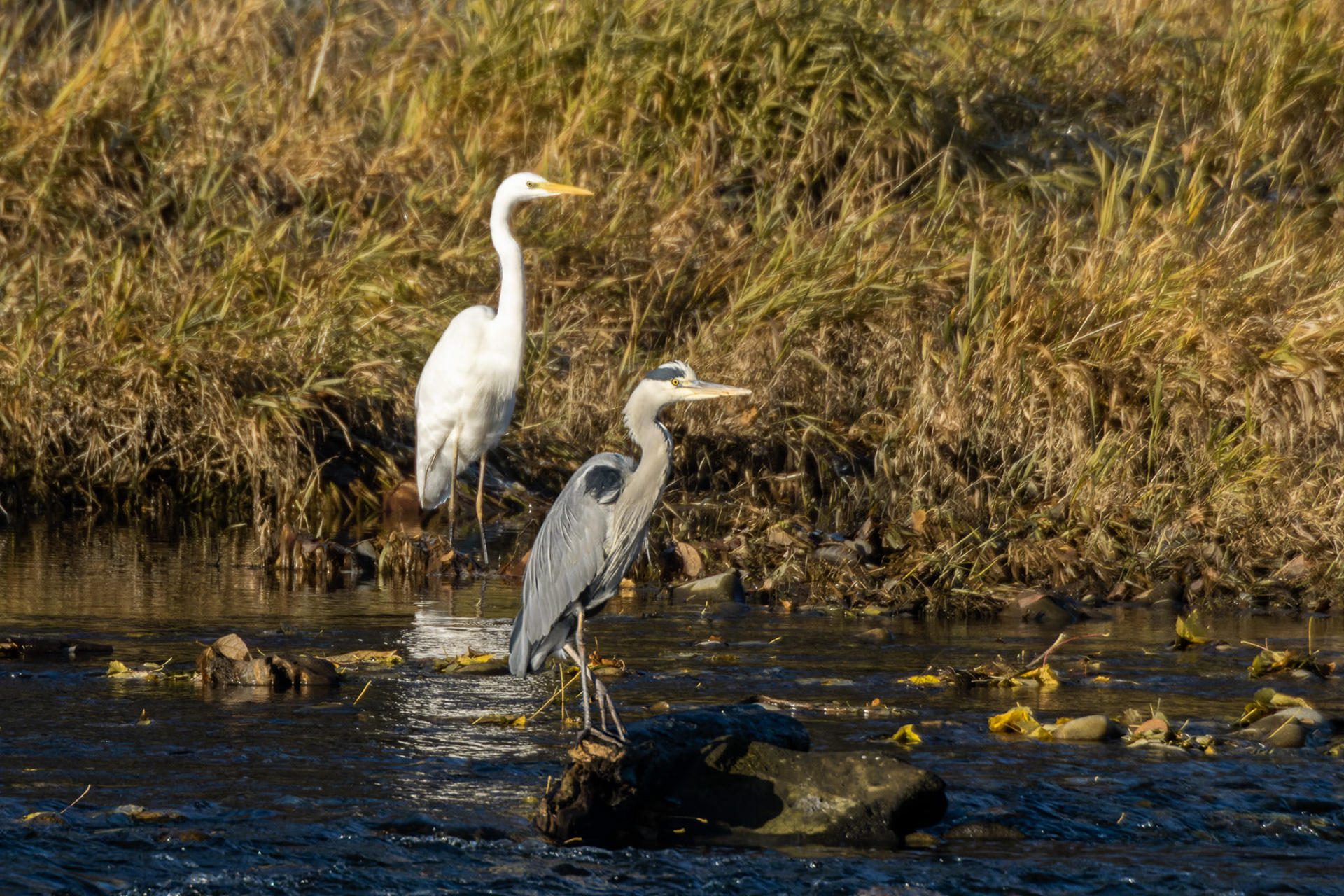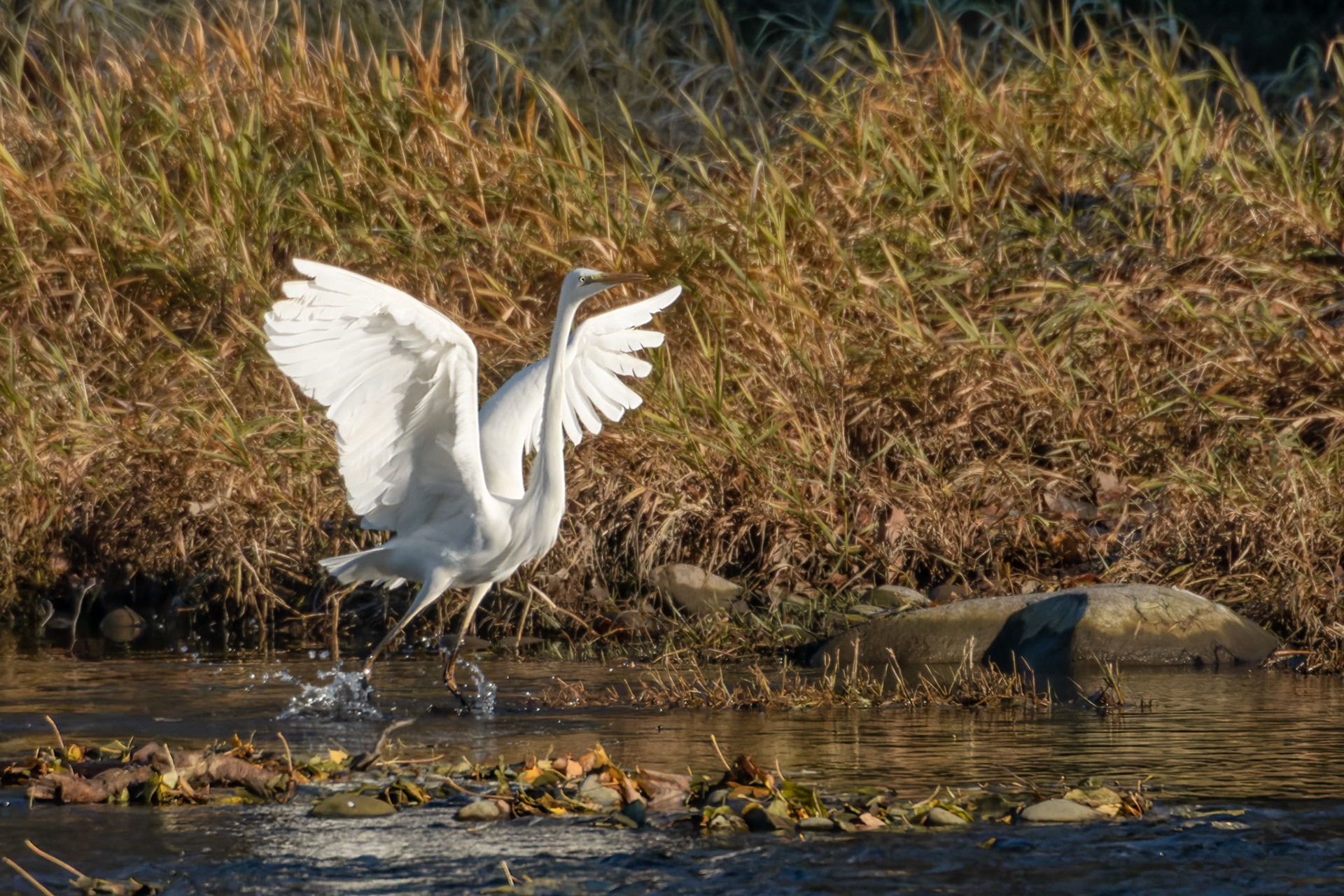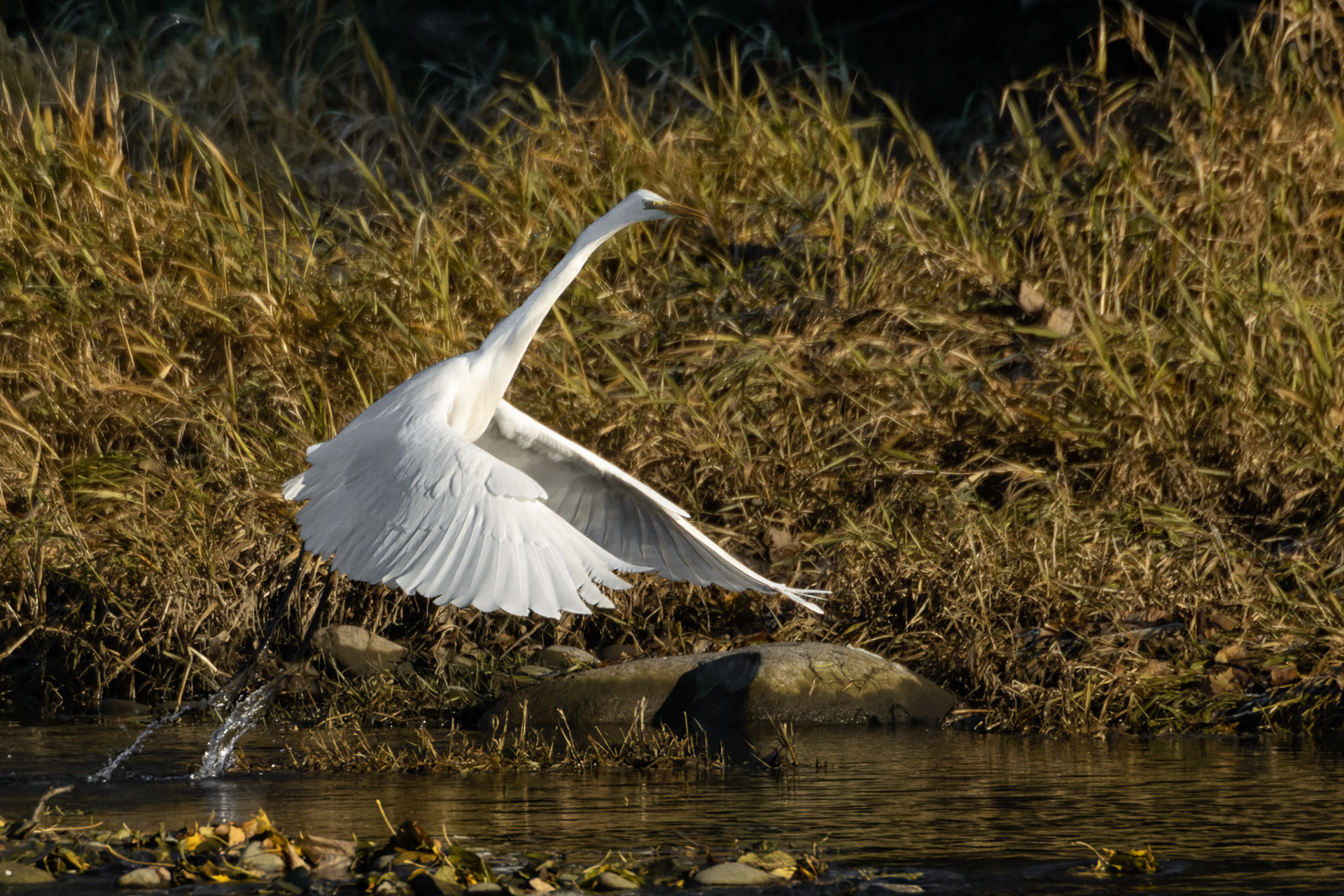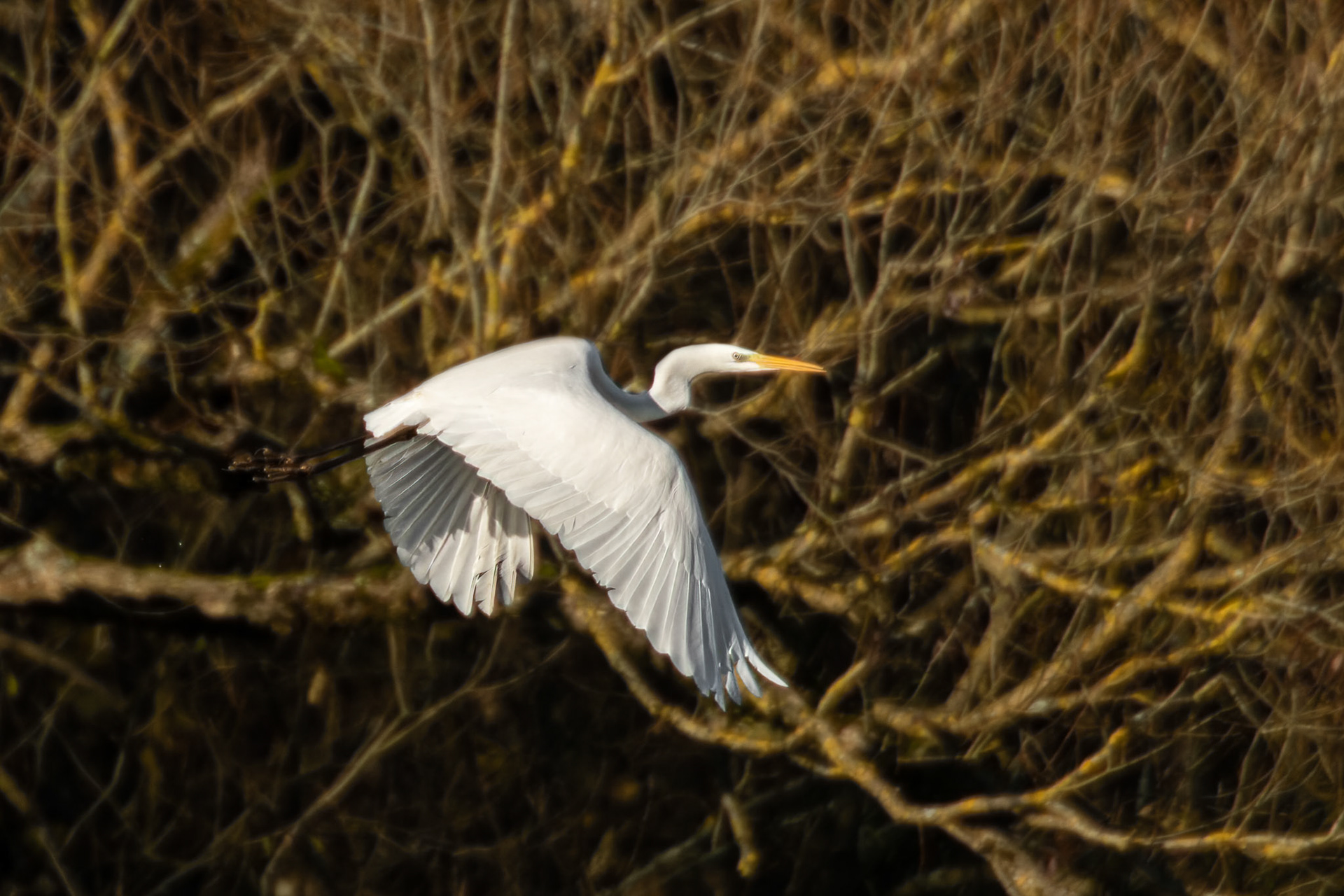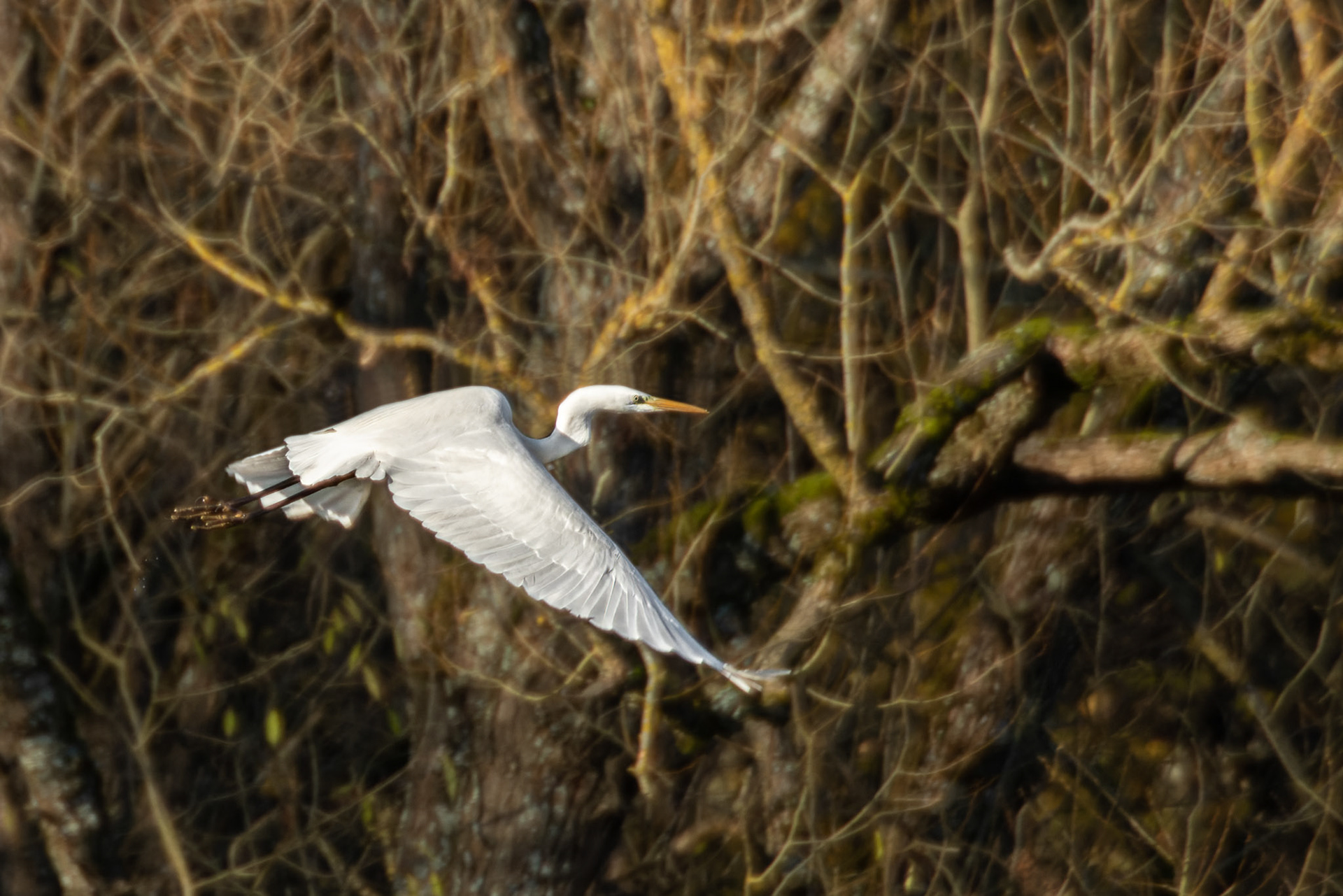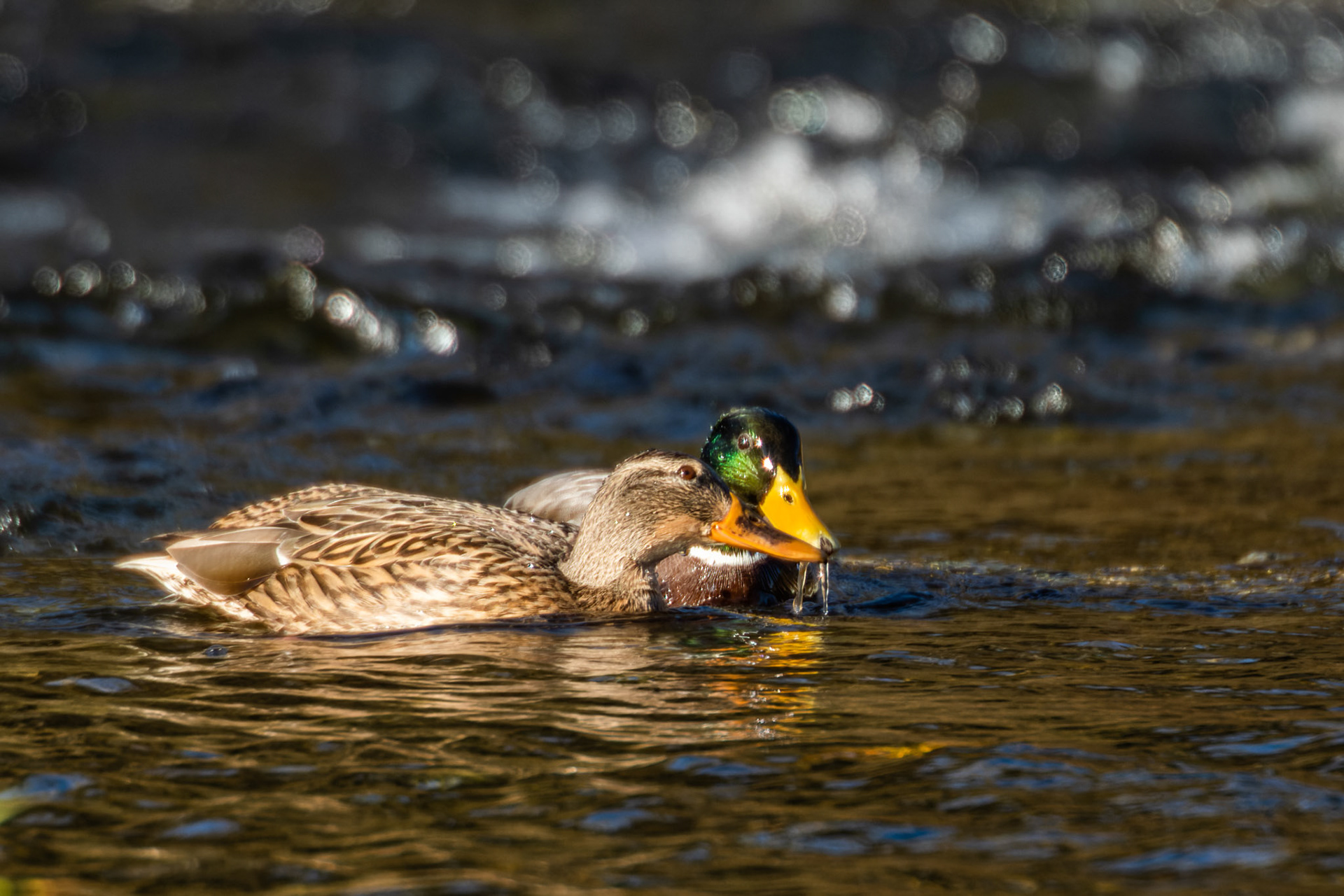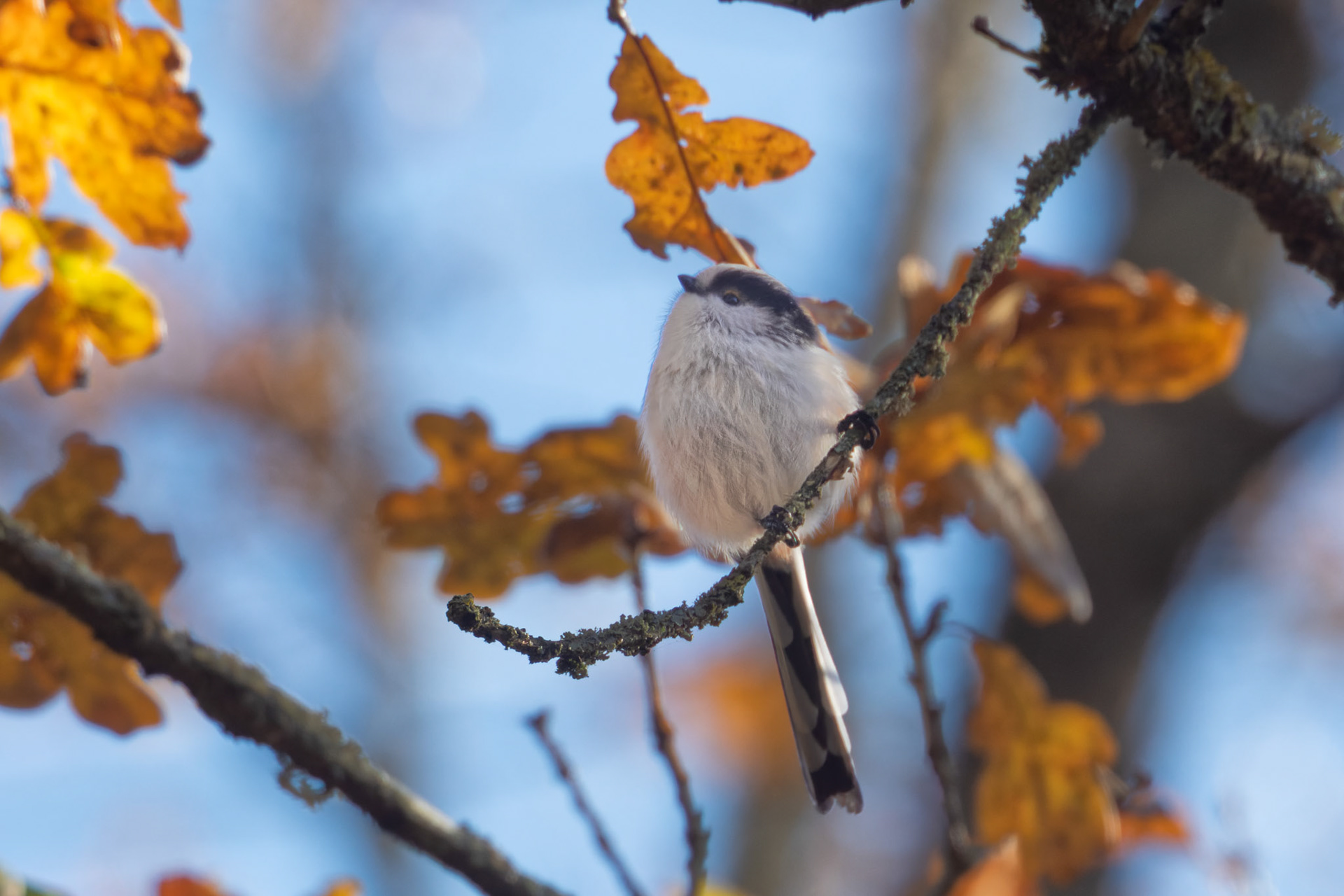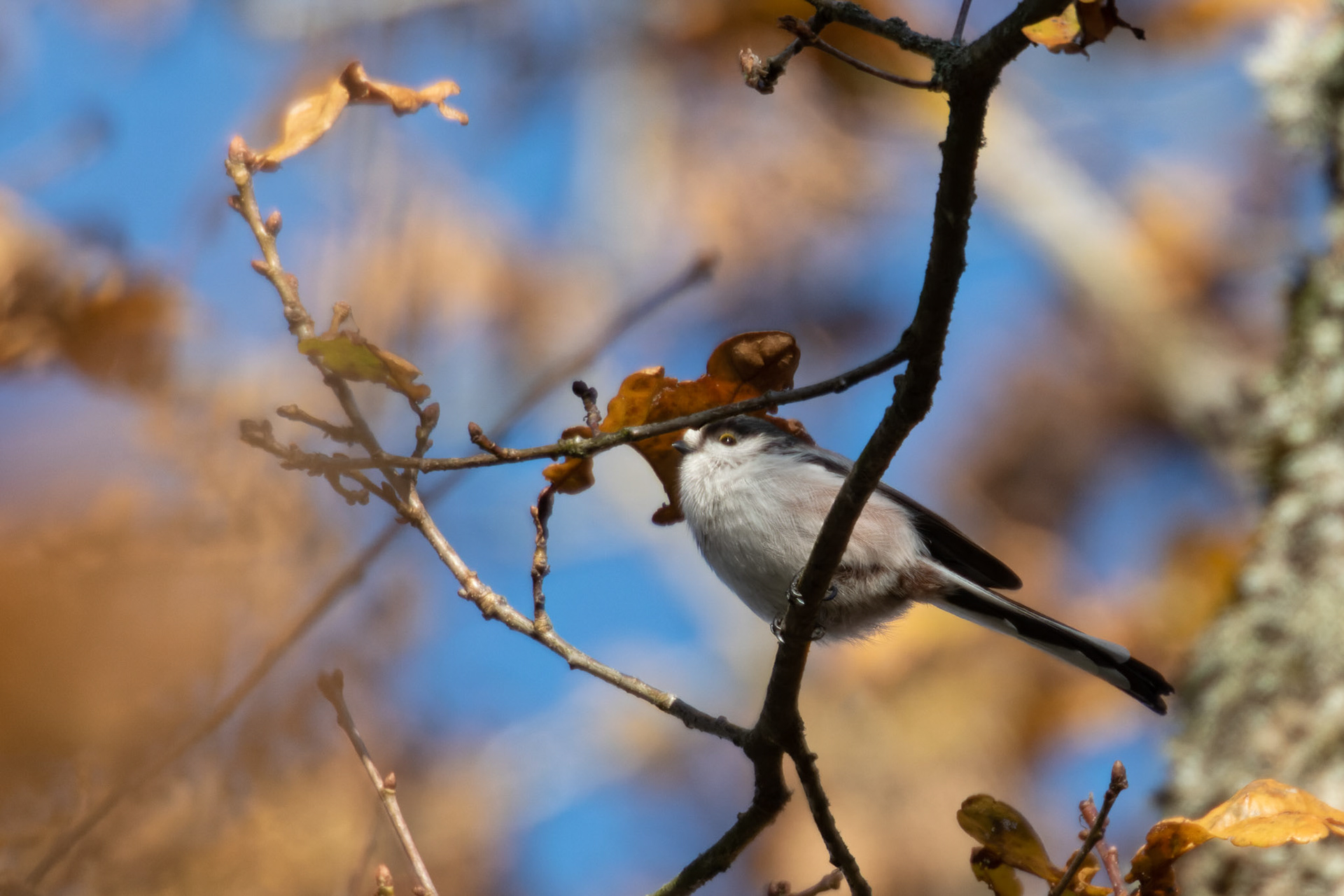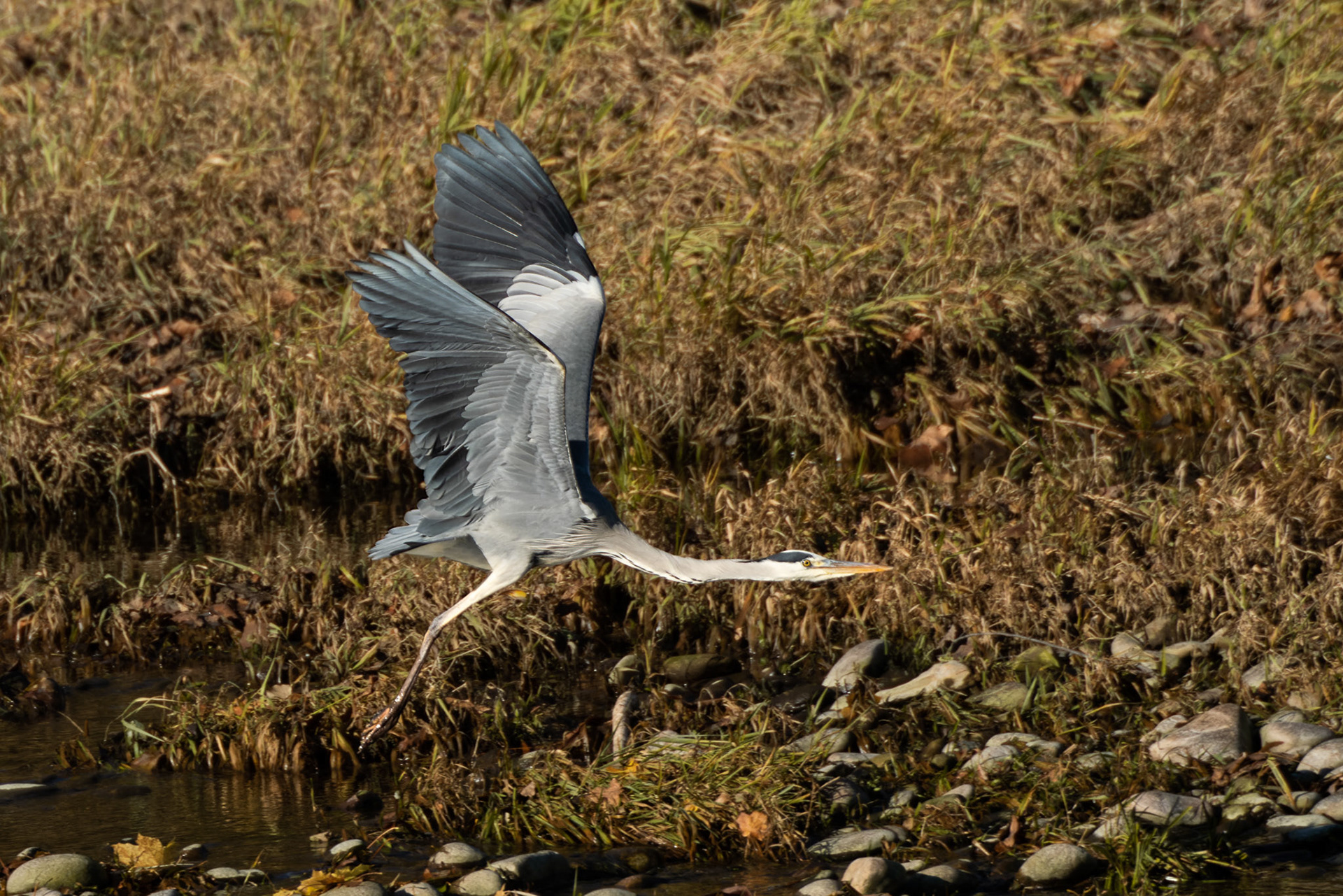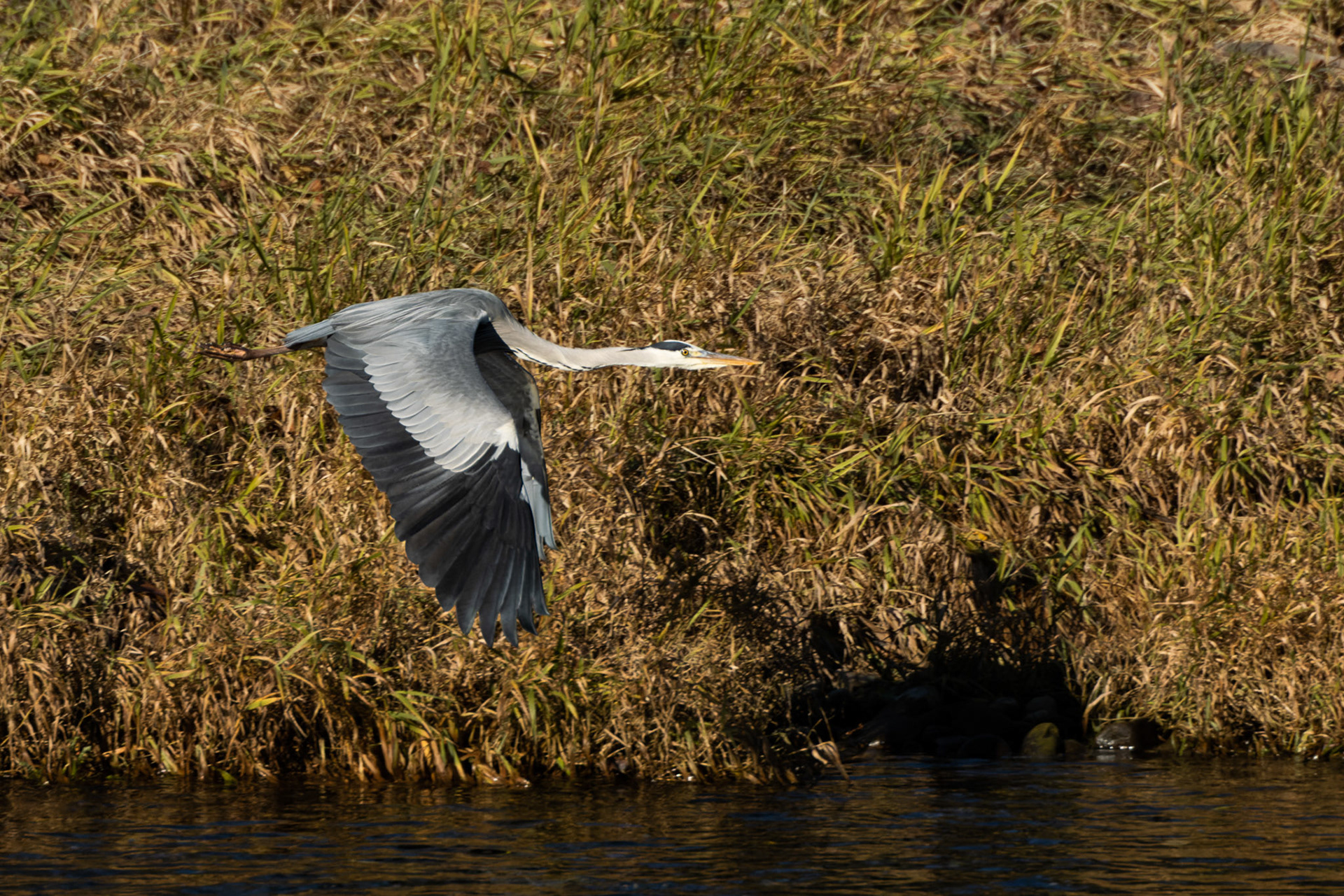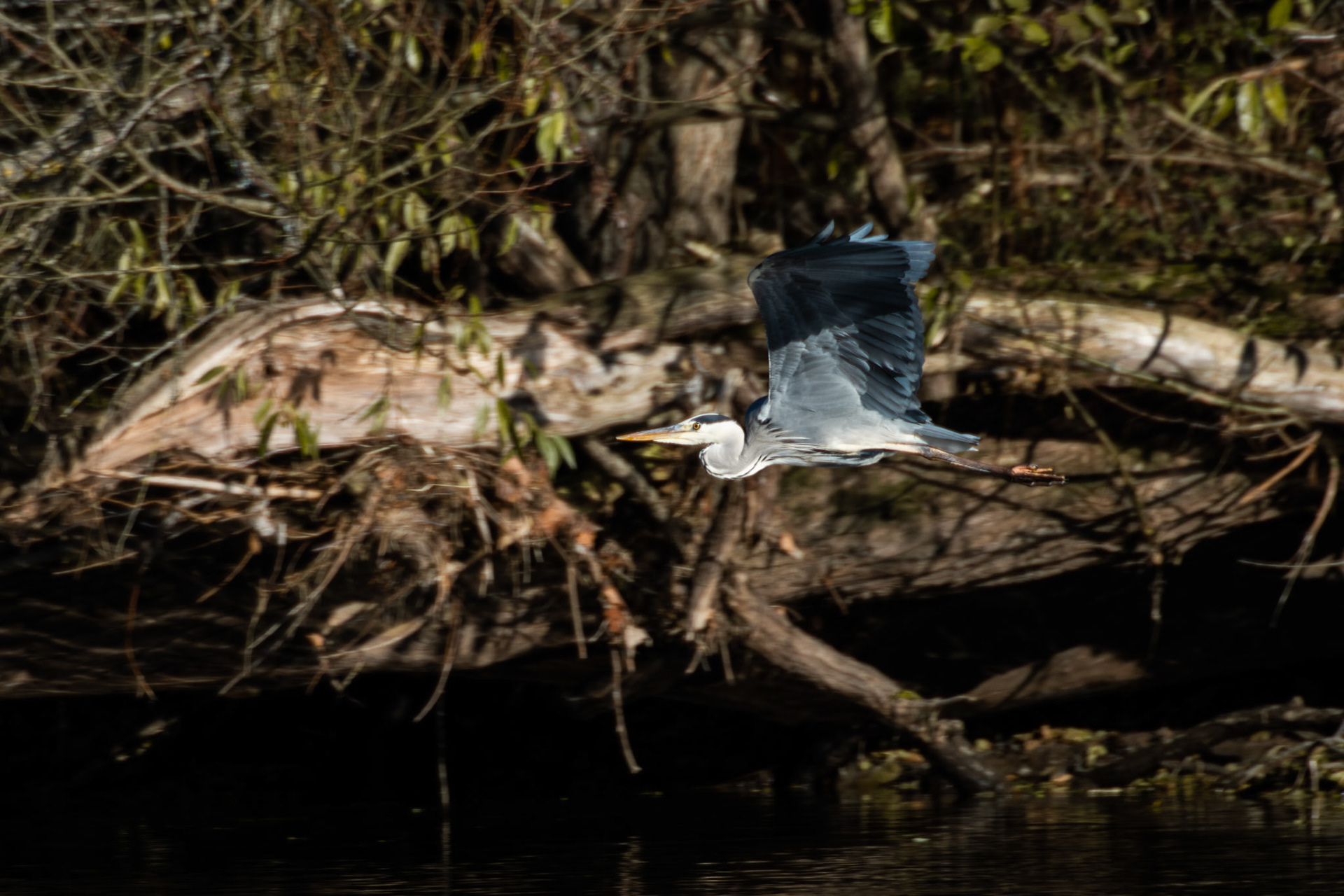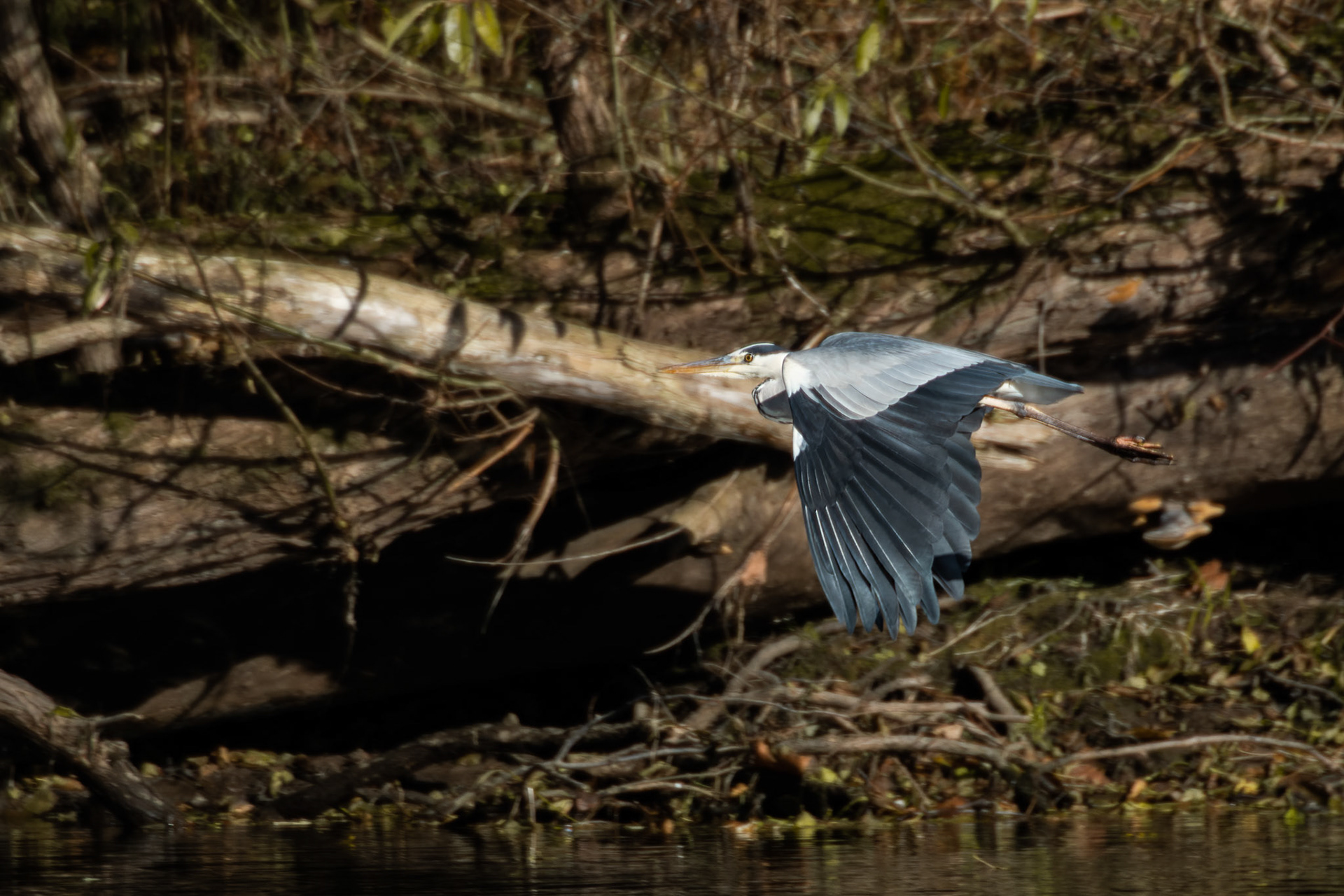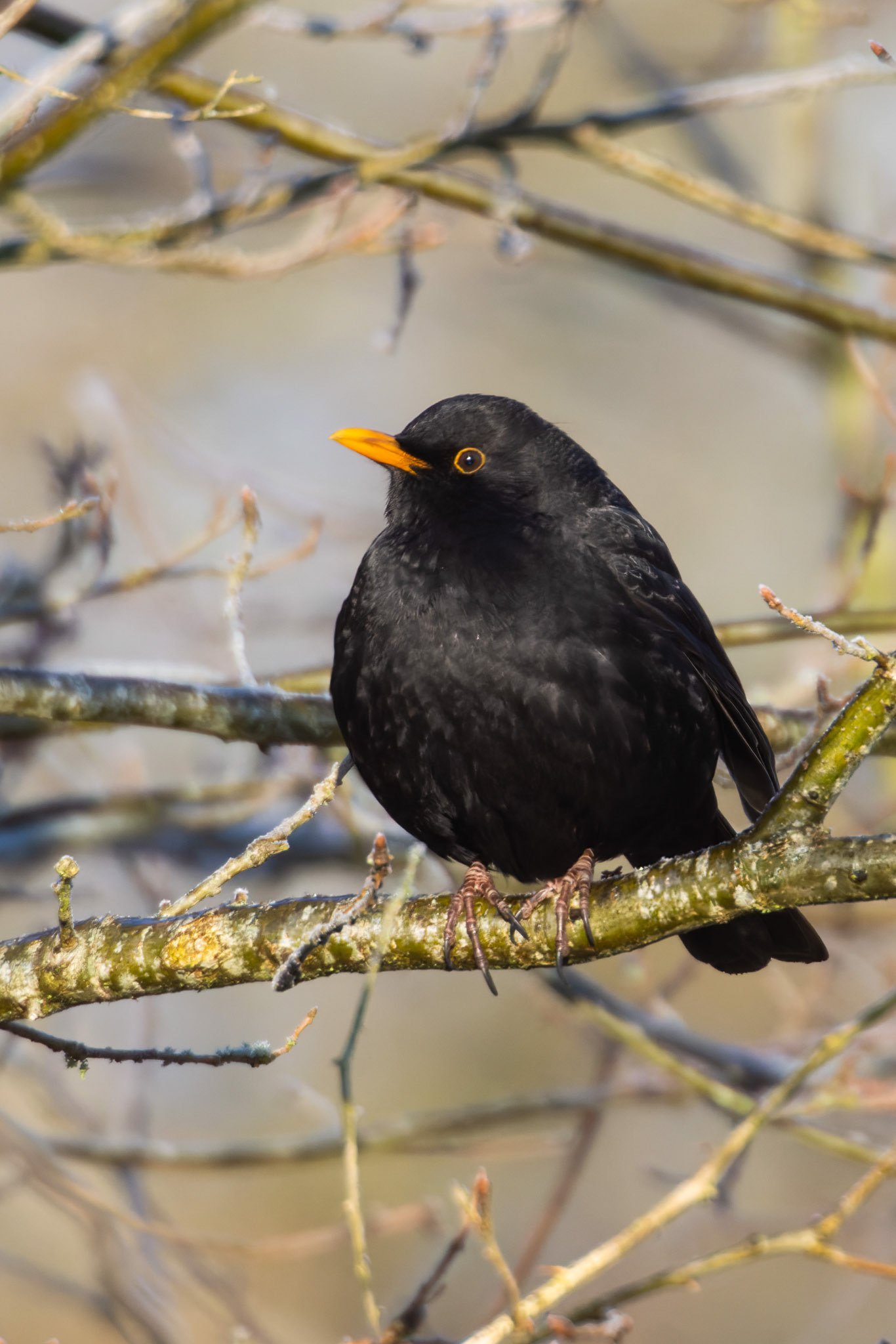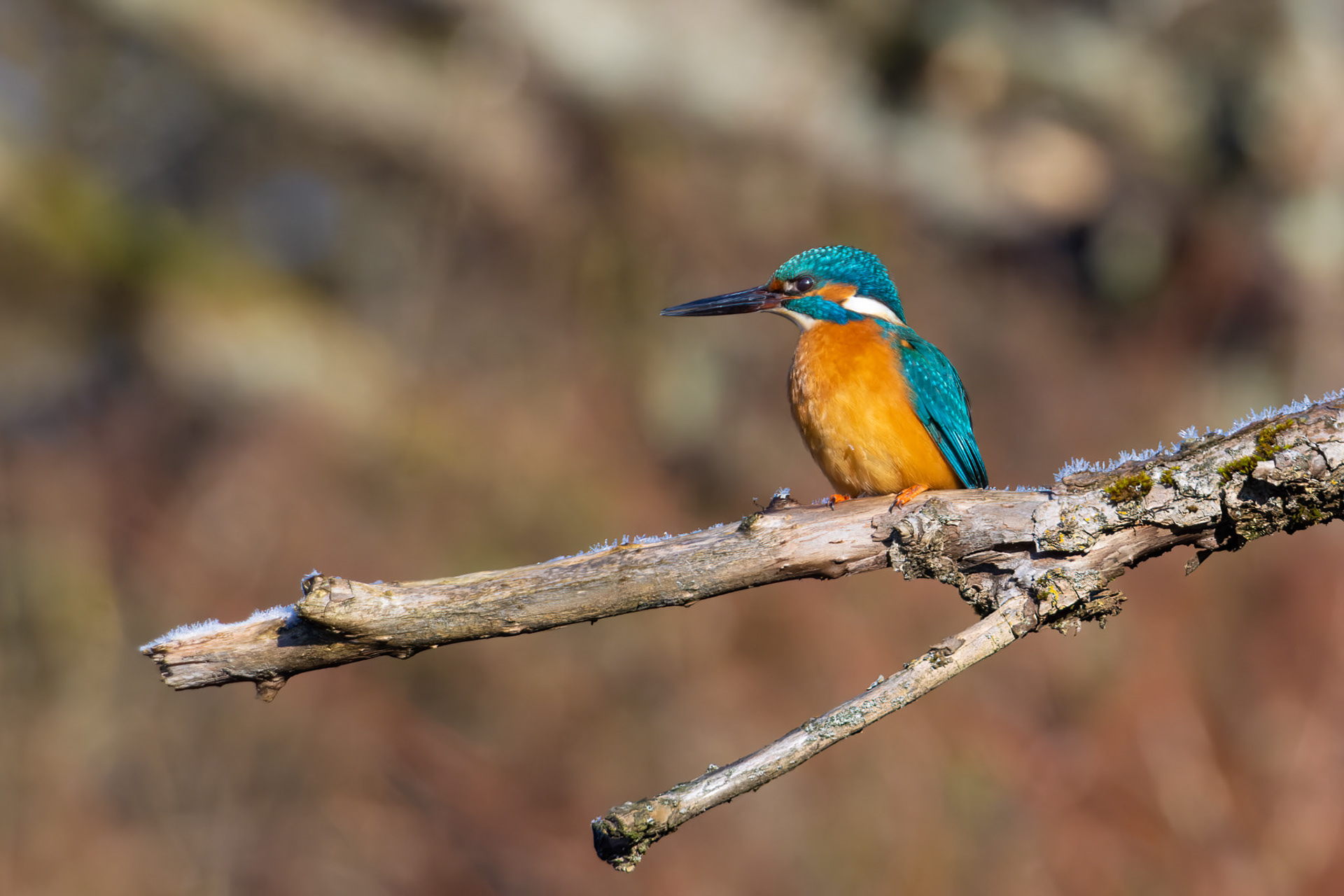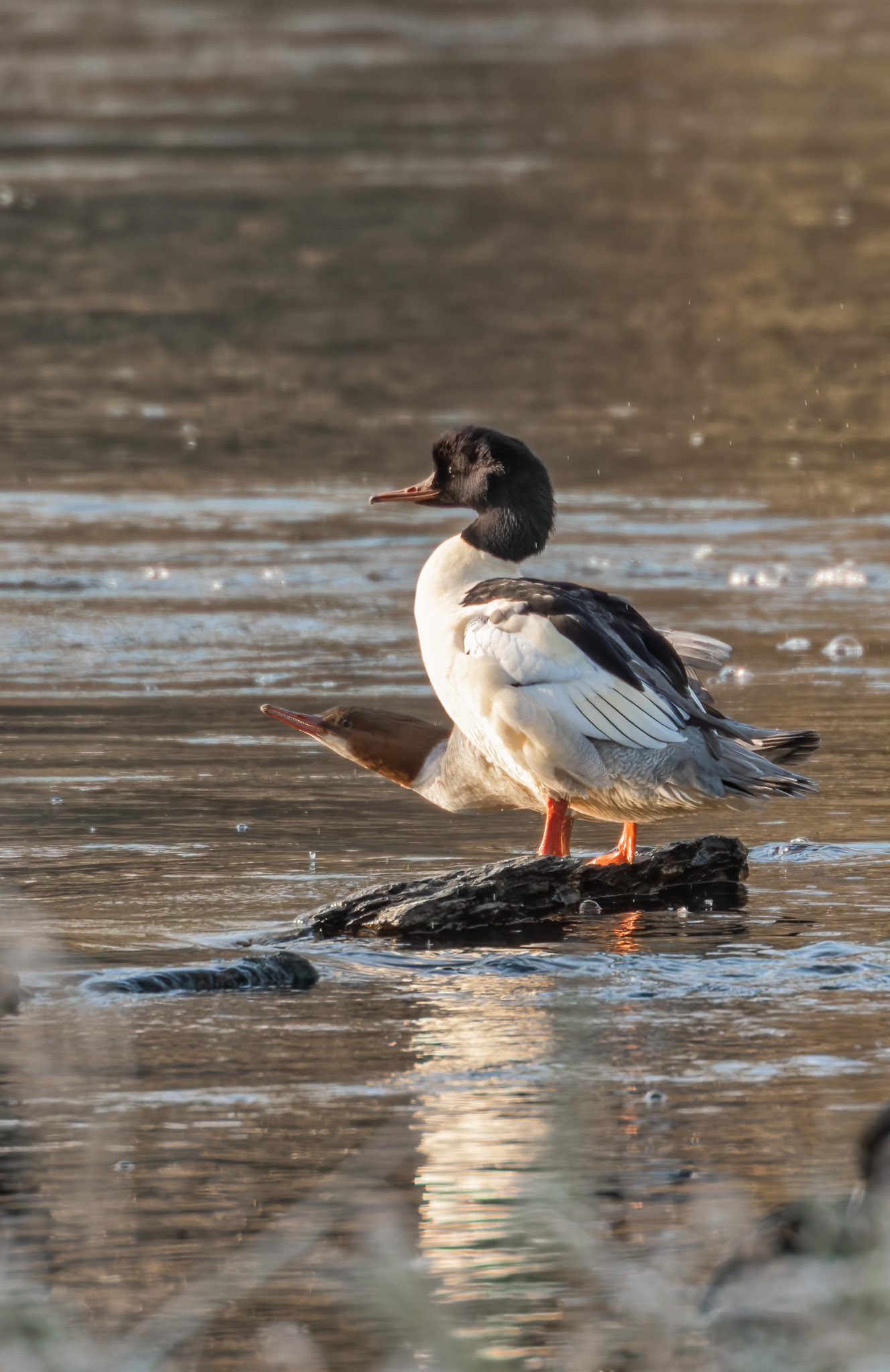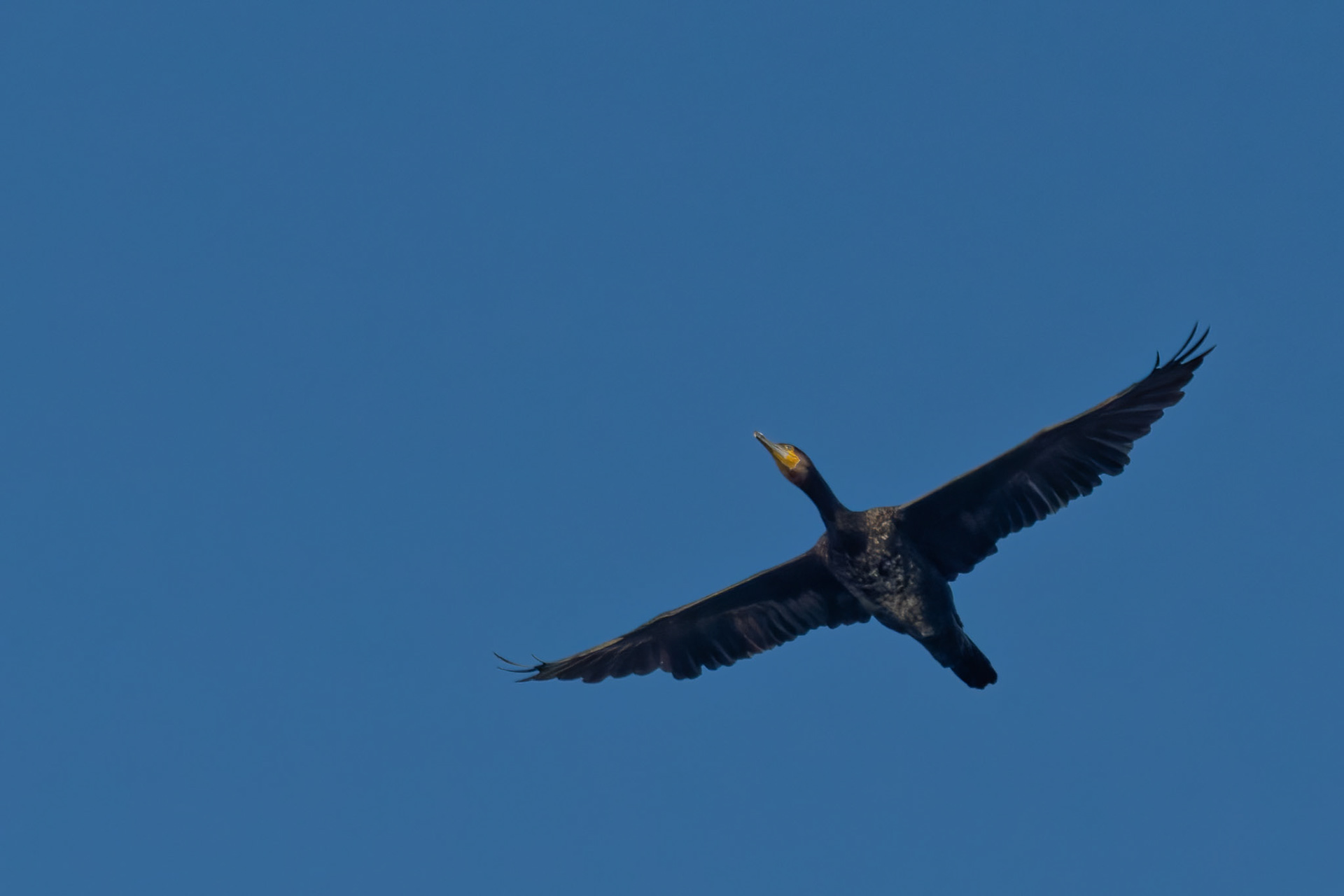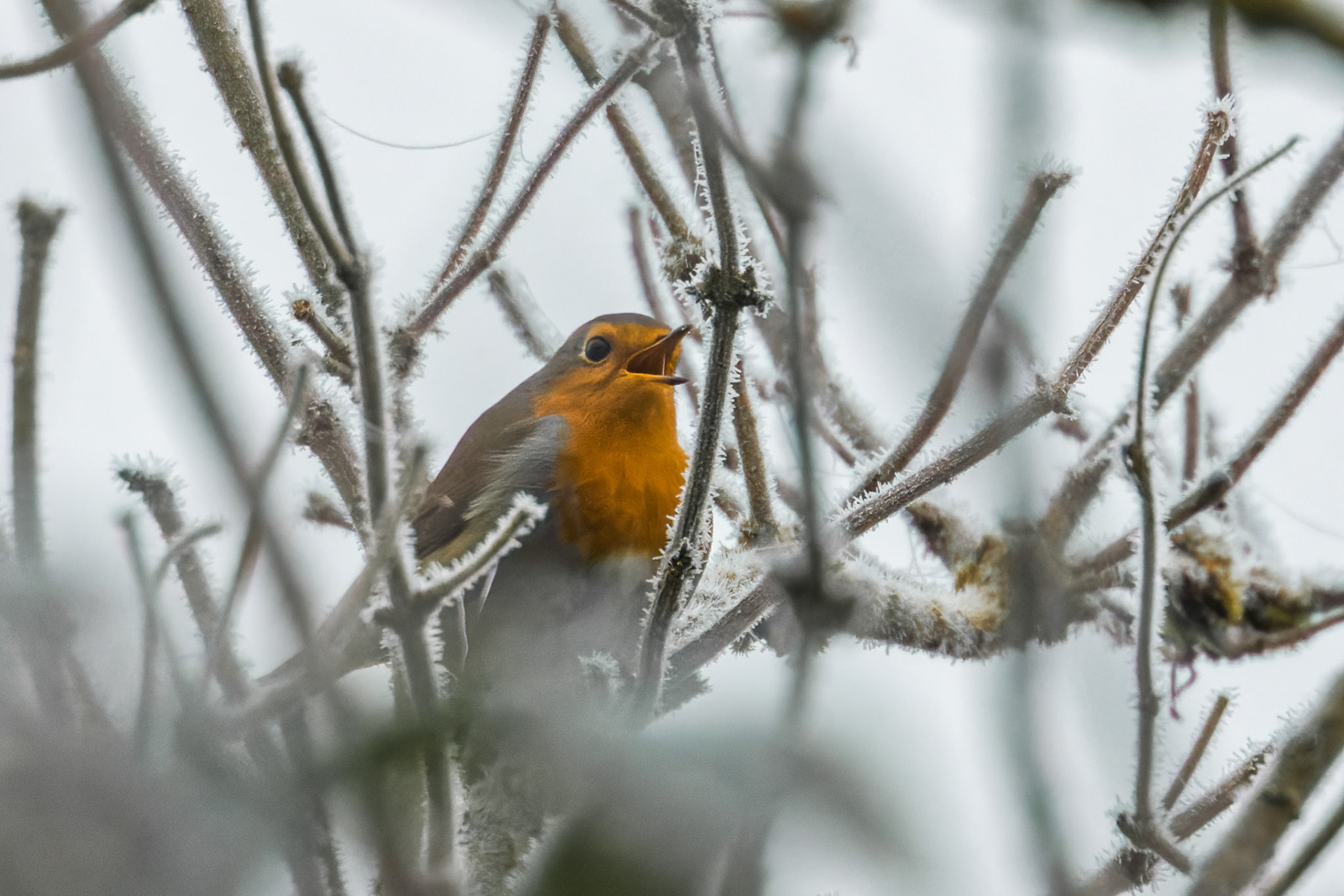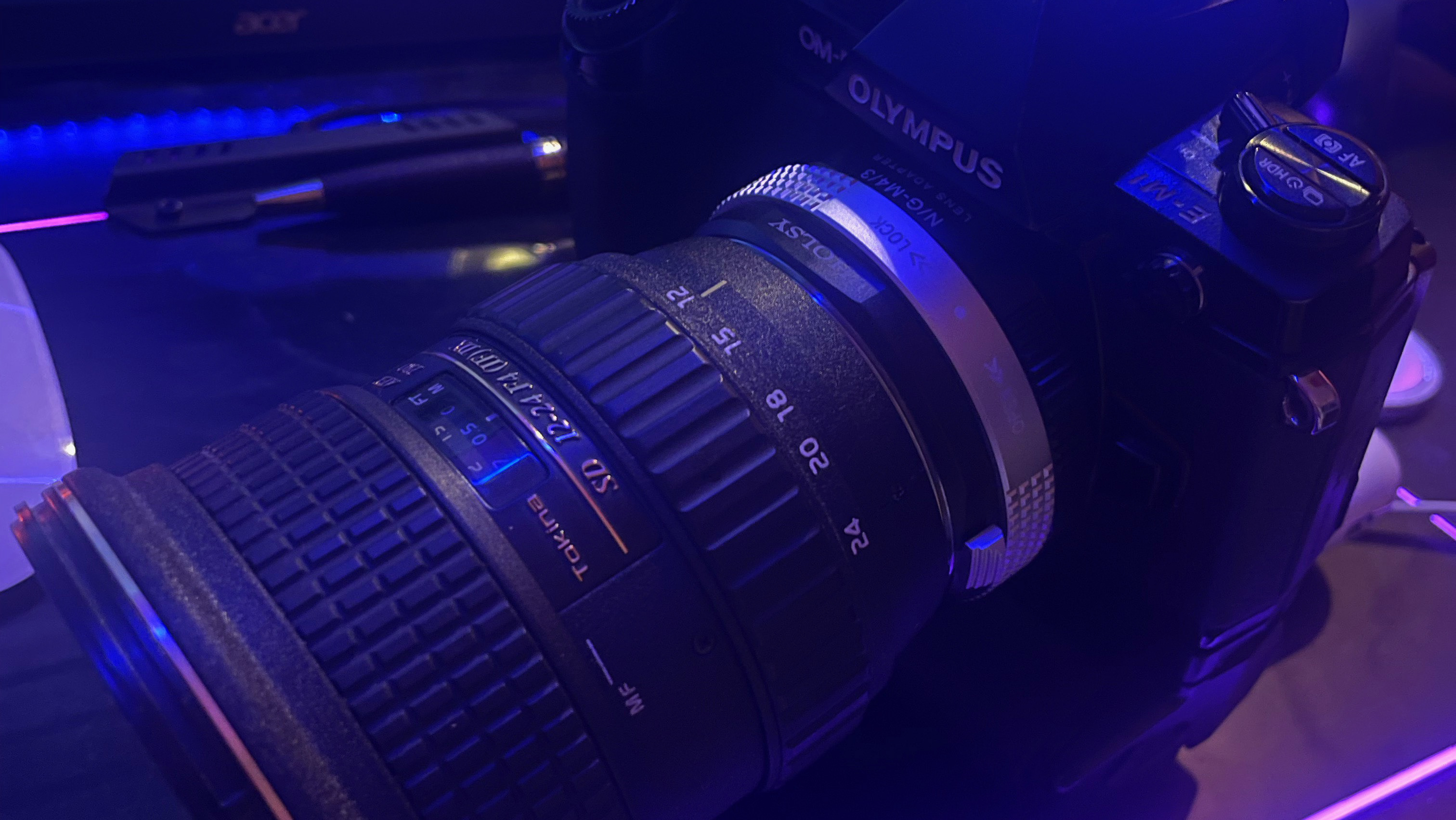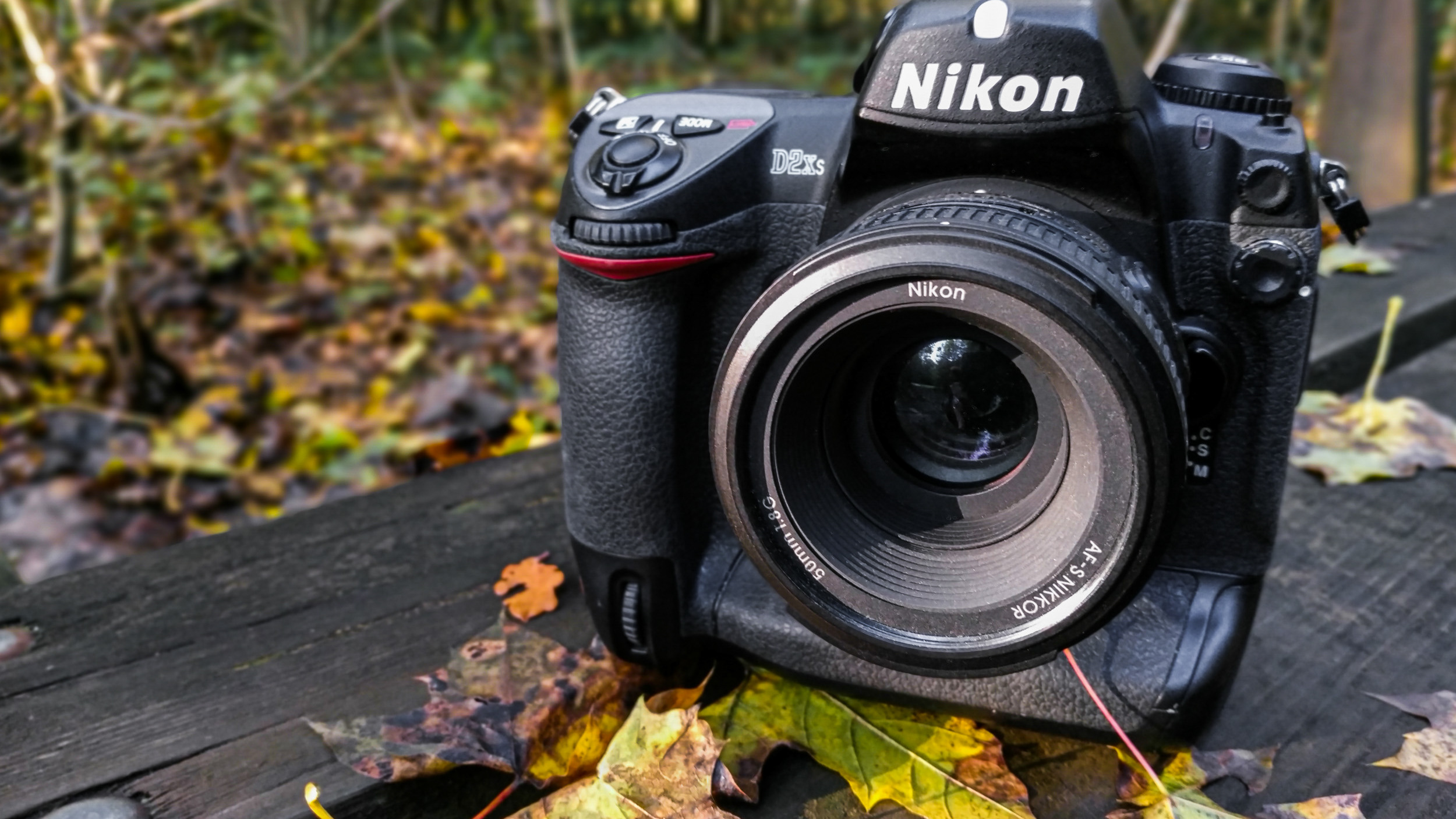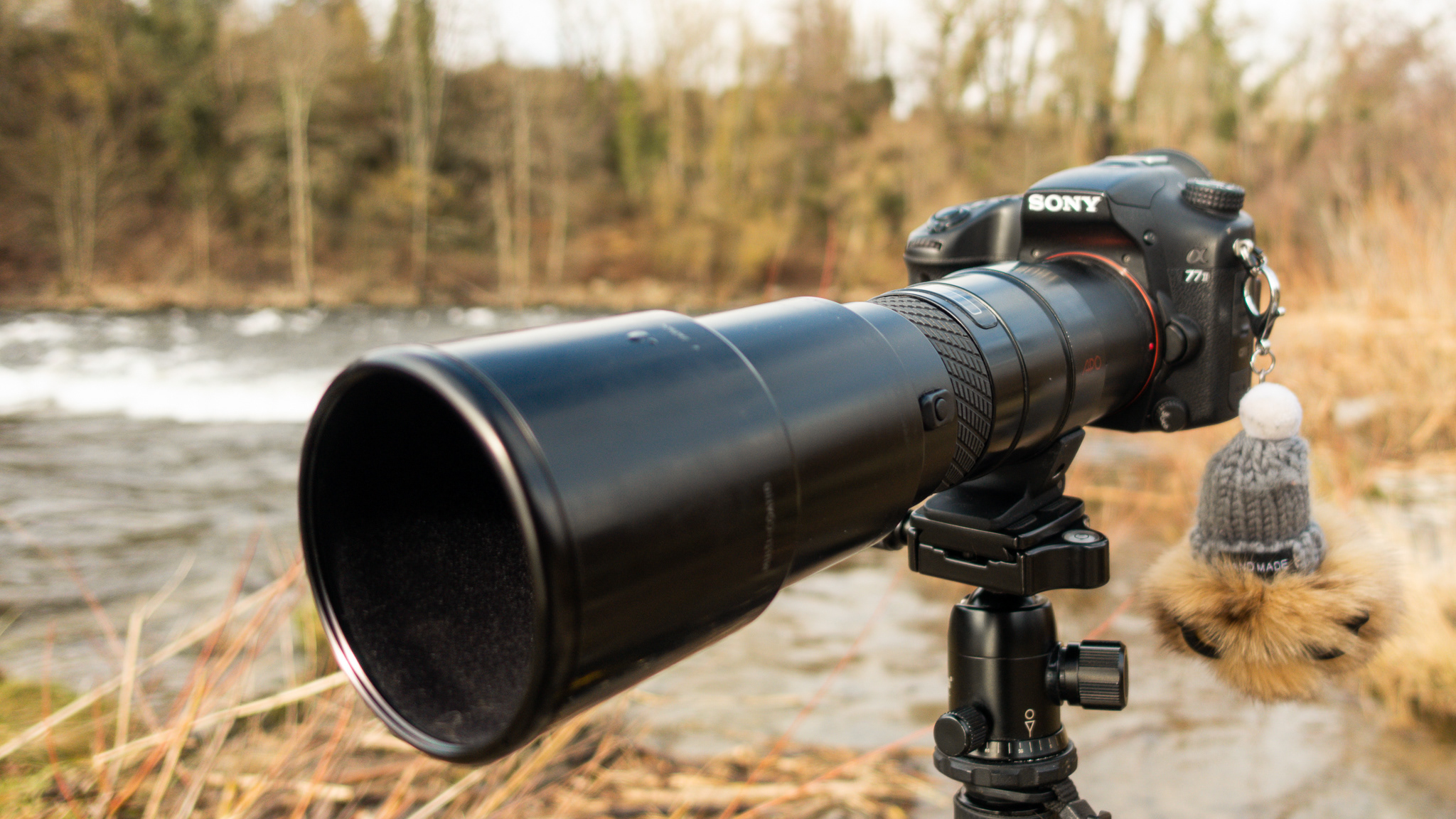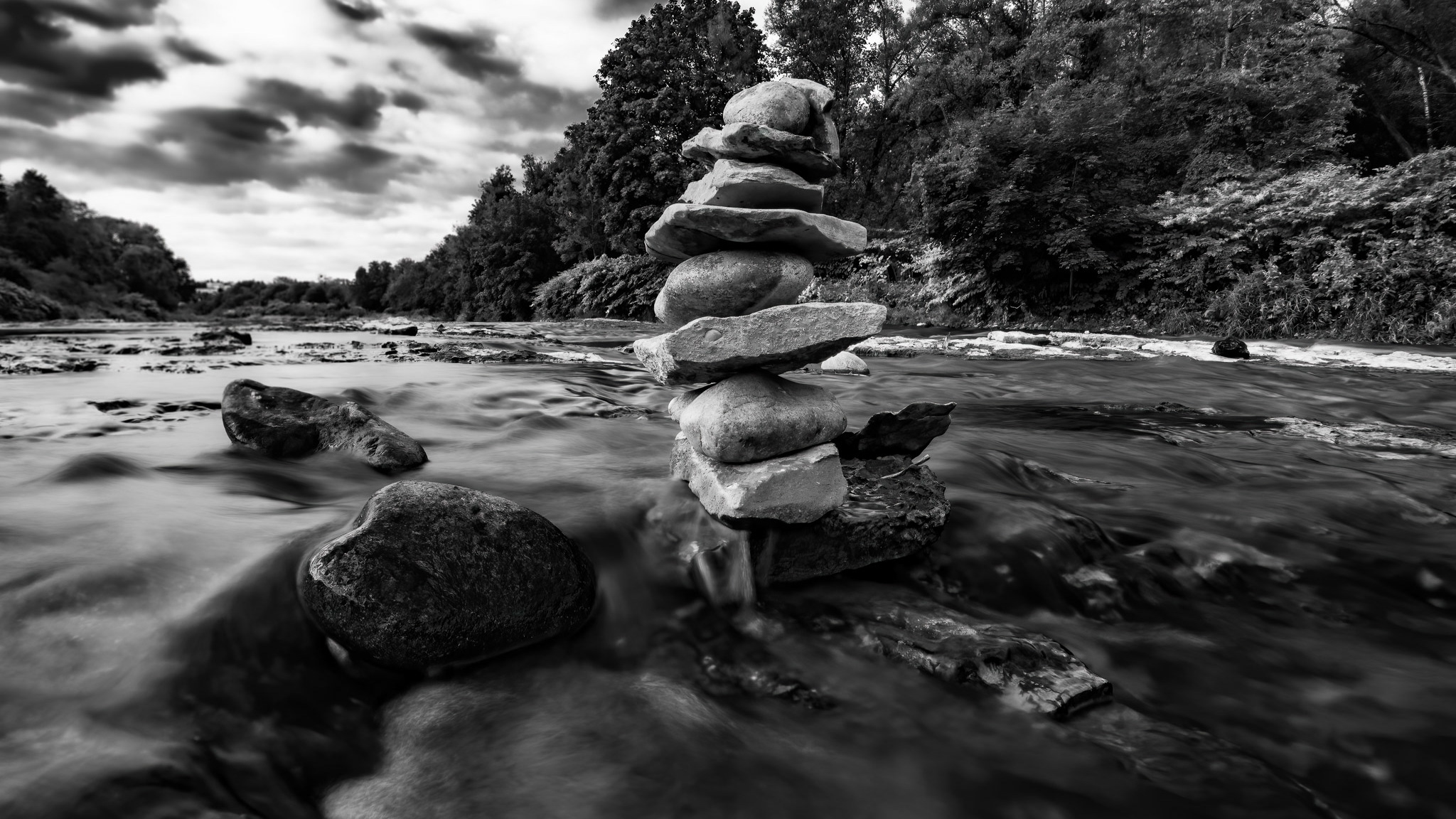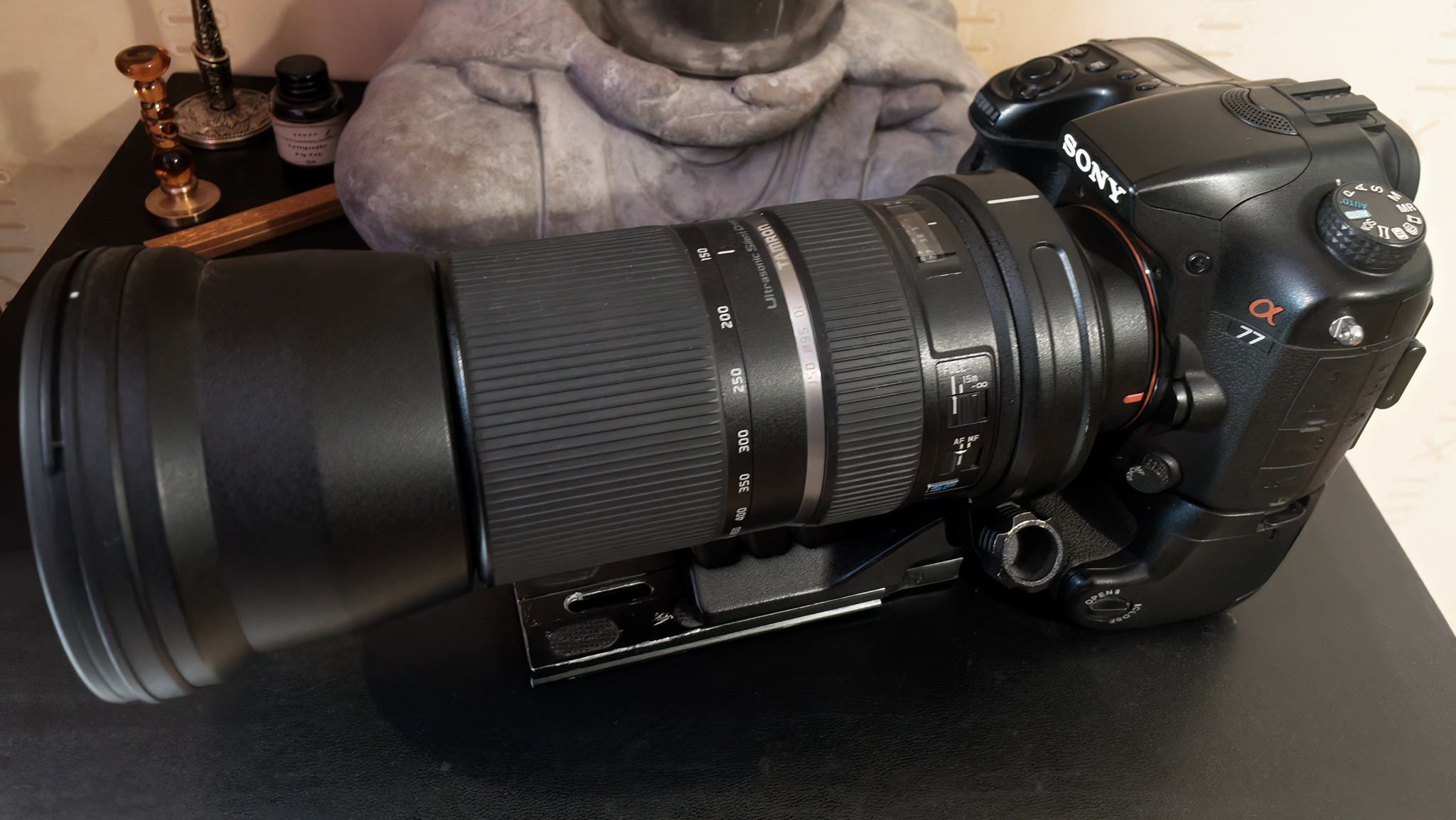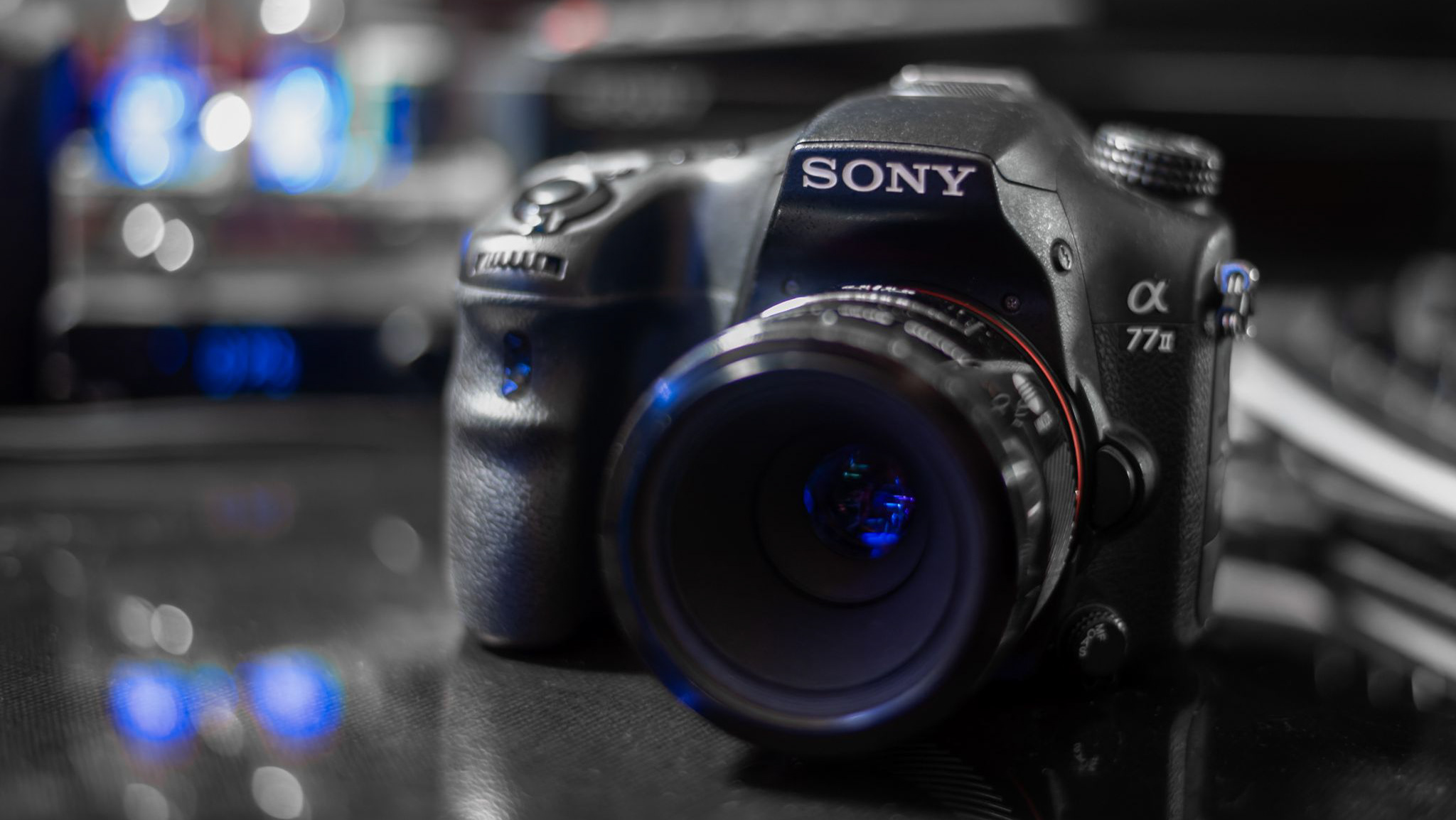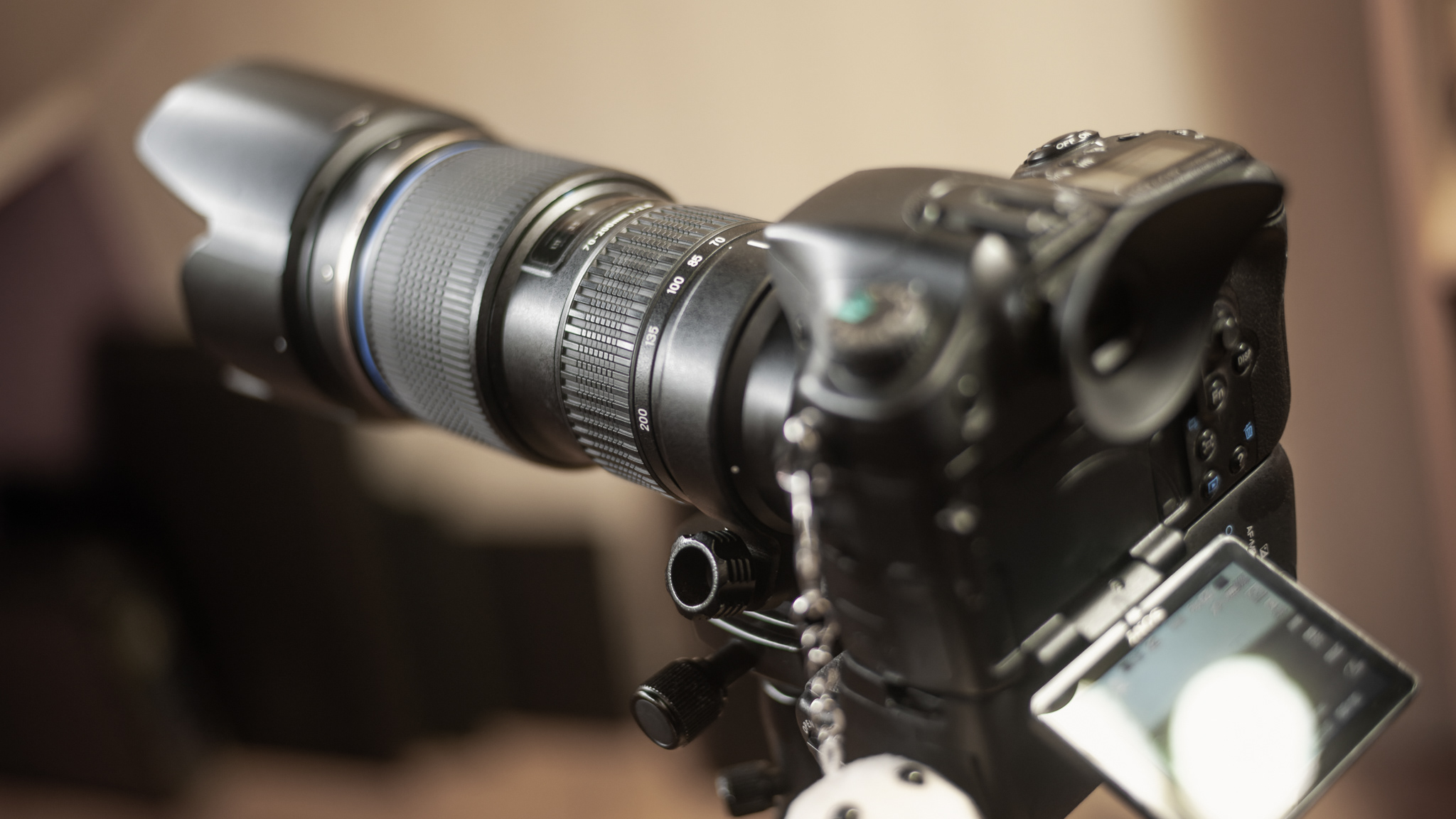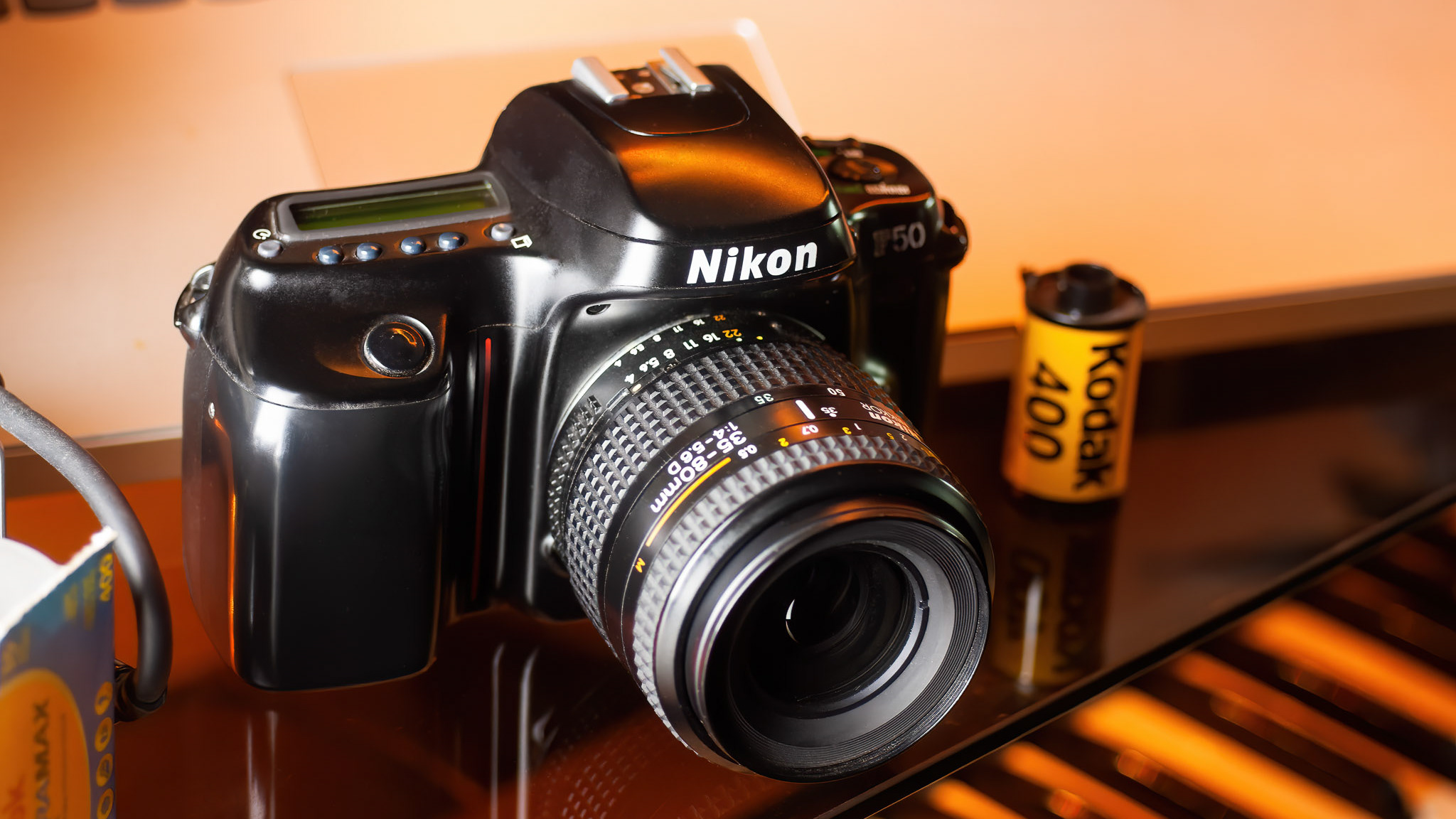I got my copy of the Sigma 135-400mm F4.5-5.6 APO DG Aspherical (A-mount) for less than $150 in an OK condition. This lens from 2006 is barely an updated version of the 135-400 that was released 10 years before. Filter size is 77mm, it has internal focusing, weights only 2.6lbs, has a bad zoom creep tendency, and the closest focus is about 7ft. Nothing to die for, except for its price on the used market.
After adjusting the focus (it required -7 focus adjustment on my Sony,) it is OK up to 300mm. At 400mm, it's much less consistent and accurate, especially in continuous focusing mode. On the A77, focusing is more accurate when the focus motor speed is set to slow: it's not hunting, but it is obviously quite slow. It can take 2 seconds to get a focus lock from let's say 10ft to 20 yards. If you get surprised by a bird flying towards you, you will miss it.
Chromatic aberrations are kept low and you'll start noticing some weird colored fringing only in the most extreme contrast situations (coma will make it look worse and very hard to deal with). Distortion and flare are negligible and color reproduction is good, but contrats is not. Those older lenses often lack micro contrast. This one is no exception. Easily fixed in post.
At the longer focal length, the biggest issue I have with this lens is spherical abberation. It's a weird lens, its optical behavior is quite strange, a bit inconsistent and unpredictable. Sigma managed to limit AC, but spherical aberration and coma are really weird. If your focusing is perfect, it can help a little, and you can somehow correct some of it in photoshop, but it is time consuming and not really easy. I had to work my ass off in photoshop on the great egrets photos to make these aberrations less obvious.
From 135 to 300mm shaprness is ok. it is best at F/8 aperture. At 400mm F/10 gives a less than decent sharpness, but when it is all that you have, you have to deal with it in post.
You'll note the bokeh is ugly, fuzzy, distracting.
The field of view on APSC is more or less 600mm equivalent. I took photos with and without a tripod, with and without stabilisation, with continuous AF on moving subjects, and trying to stick to single AF on static birds when using a tripod. Handheld, the lens is very usable on birds in flight, especially bigger slower birds. But with good technique, you can also shoot smaller, faster birds. Just don't expect the perfect shot.
Obviously, shooting F/8 requires more ISO to get fast enough shutter speeds even if the stabilisation is ON. On a tripod, shooting static subjects, I kept the stab on when speed was really too slow. It helps a little. Sometimes. ISO noise is not an issue anymore even with a noisy sensor like the A77: the likes of Dxo prime denoise and Topaz denoise AI will get rid of that noise. I shot in bad light, in better light, and the resulting images are very usable.
The big difference with a more expensive recent lens is the number of bad photos you will delete during culling because of the quite inconsistent AF at 400mm. Therefore, it's important to shoot a lot. It's a bit like spray and pray, but it's a small price to pay if you can't afford a better lens. Shooting at 300mm and cropping more is also an option, unless you have no choice but shooting a distant shy and fast tiny bird.
My basic workflow with this lens was:
- import in Lightroom
- send the photos in DXO photolab (note: there is no profile for this lens): basic cropping, denoise prime, add a little fine contrast and microcontrast,
- send the photos back in Lightroom: final cropping, levels, color and contrast adjustments,
- for the photos that need it: send them in Photoshop, use the appropriate Topaz tool on a layer, mask that layer to my liking, adjust transparency, and if needed, try to minimize the spherical aberration.
It IS time consuming, and requires you to have those tools. But that is what you have to do if you can’t afford a better lens. Since you will need some editing software anyways whatever your cameras and lenses are, I assume you already have some of them. If you’re really on a super tight budget, I recommend buying at least DXO photo lab.
Of course, a better lens will be better (wow, that was deep). But if you're on a tight budget, this Sigma 135-400 is an inexpensive option that will get you photos that you wouldn't shoot otherwise. It will require more shooting discipline, more work on the field, and more work in post to get some decent to good photos. For sure, if you're posting 1 to 2MP photos on social media only, your images will likely look as good as any other photo: downscaling will get rid of the noise, softness and of some of the spherical aberration.
